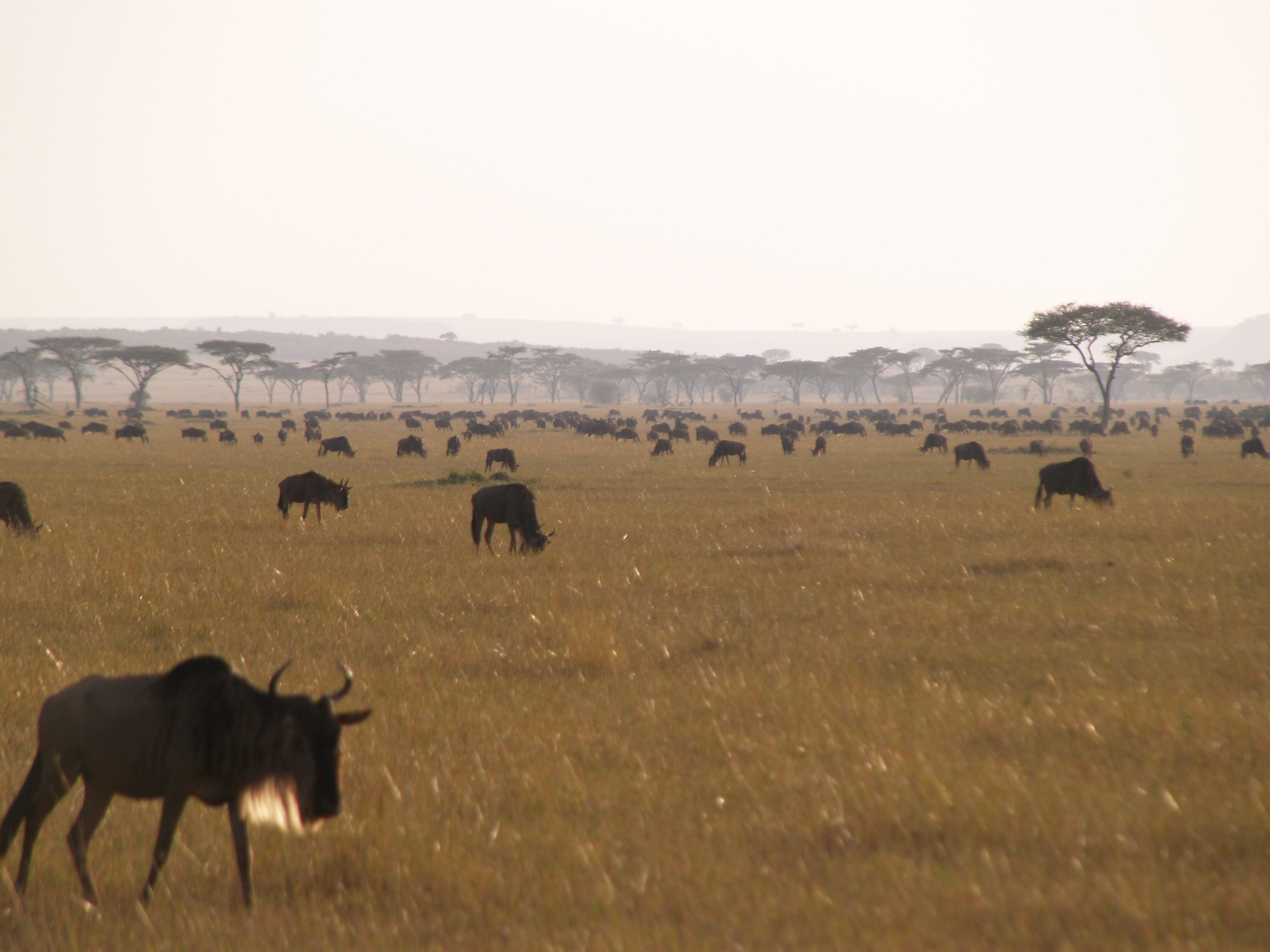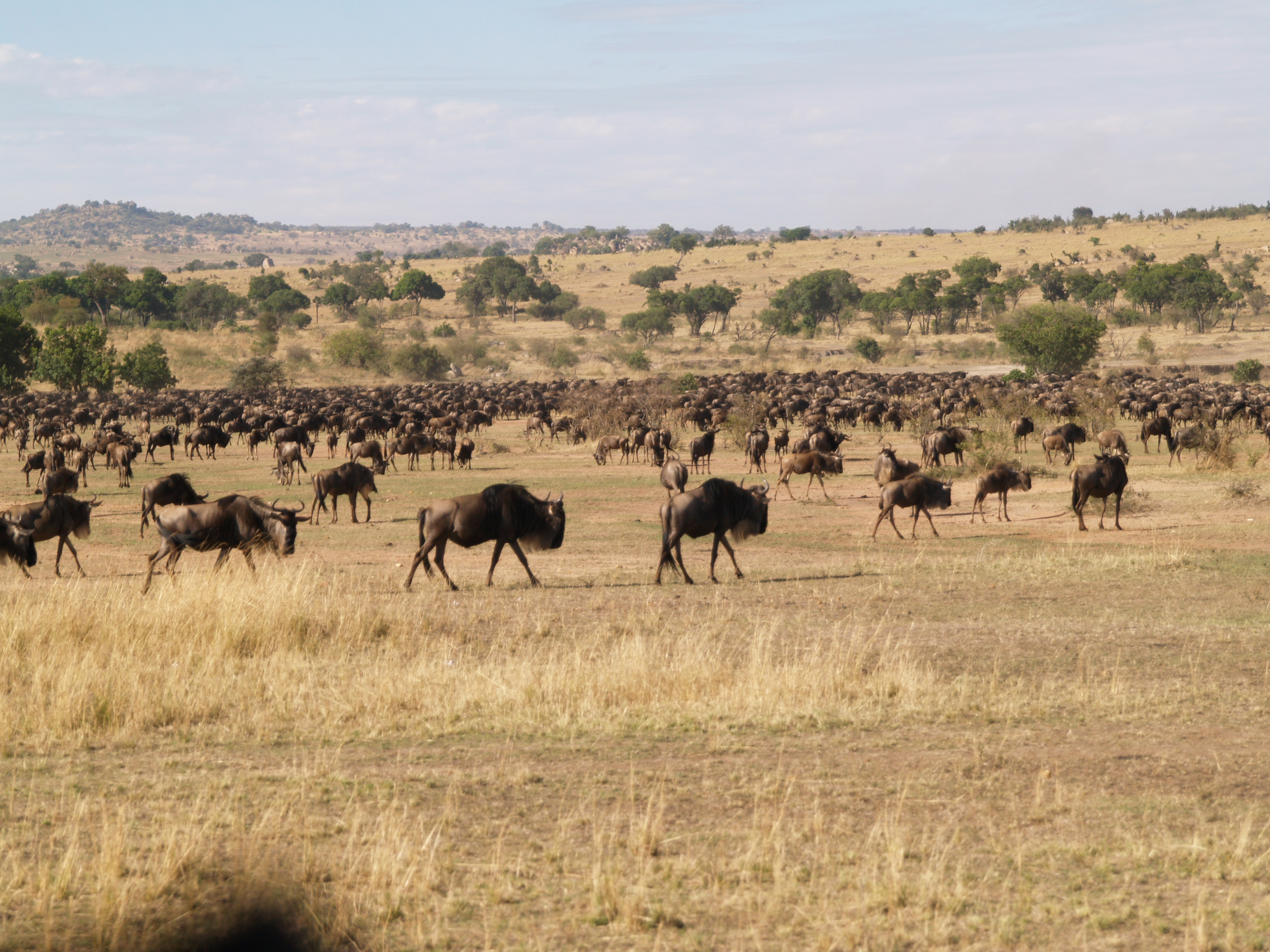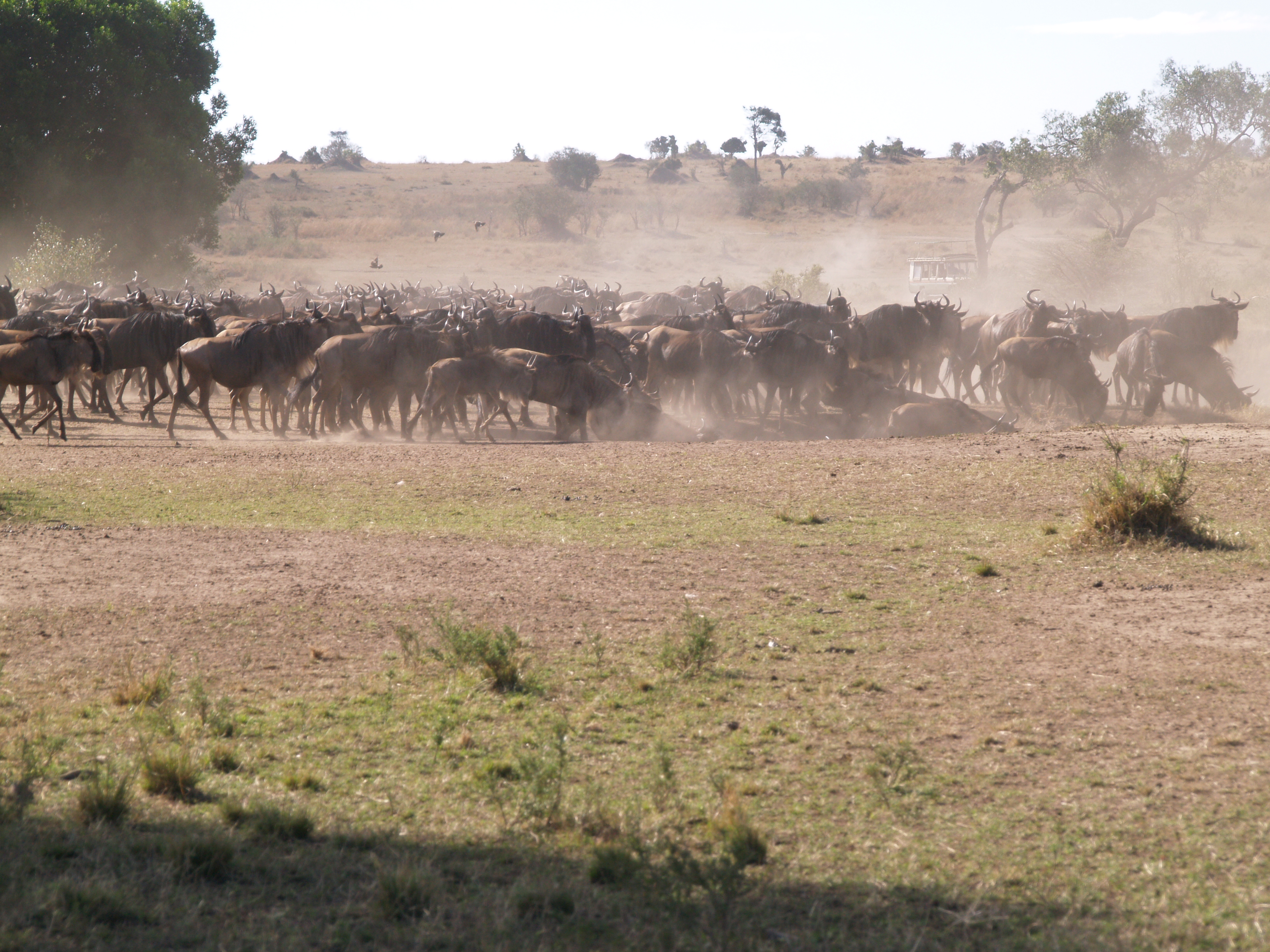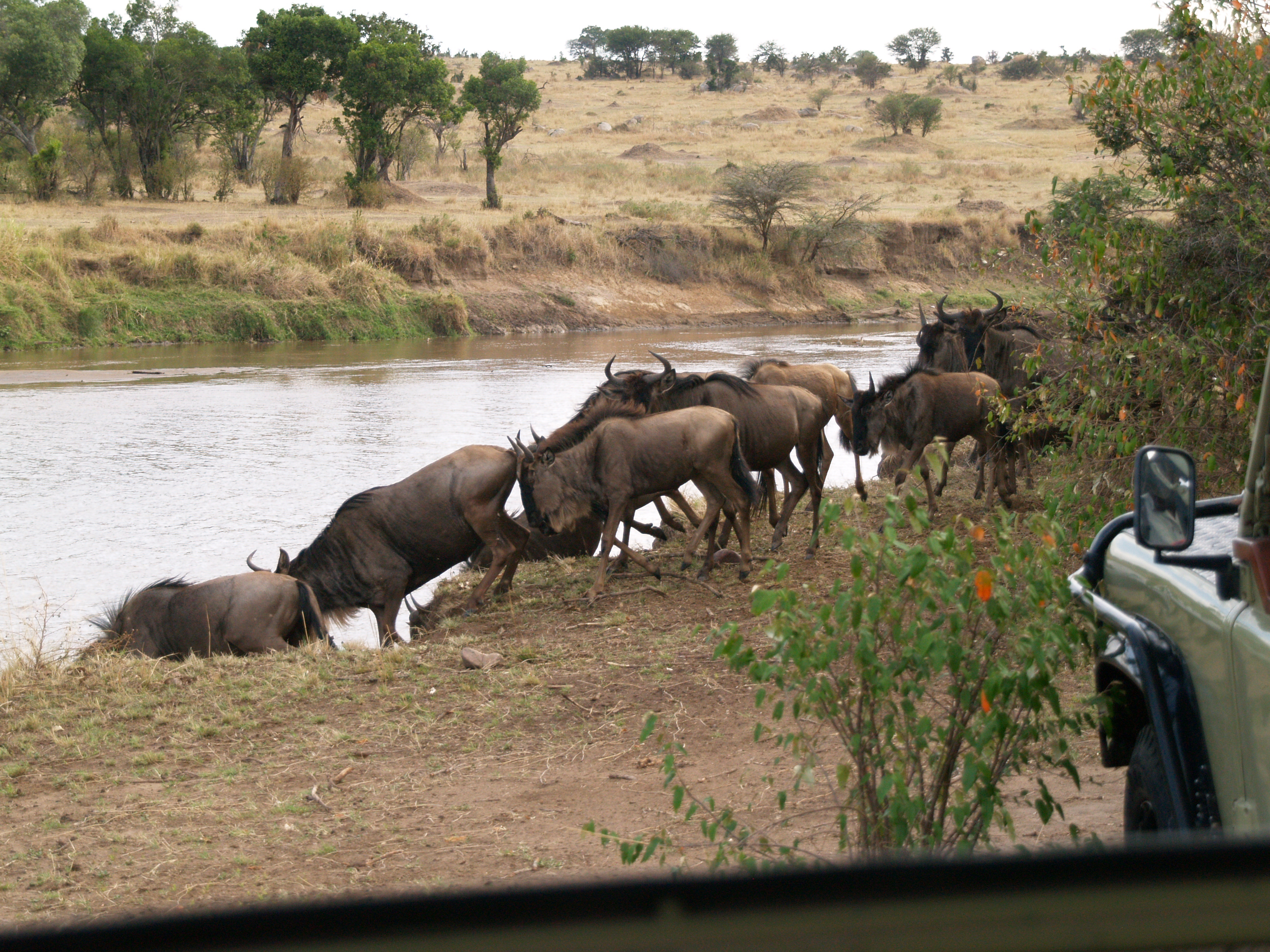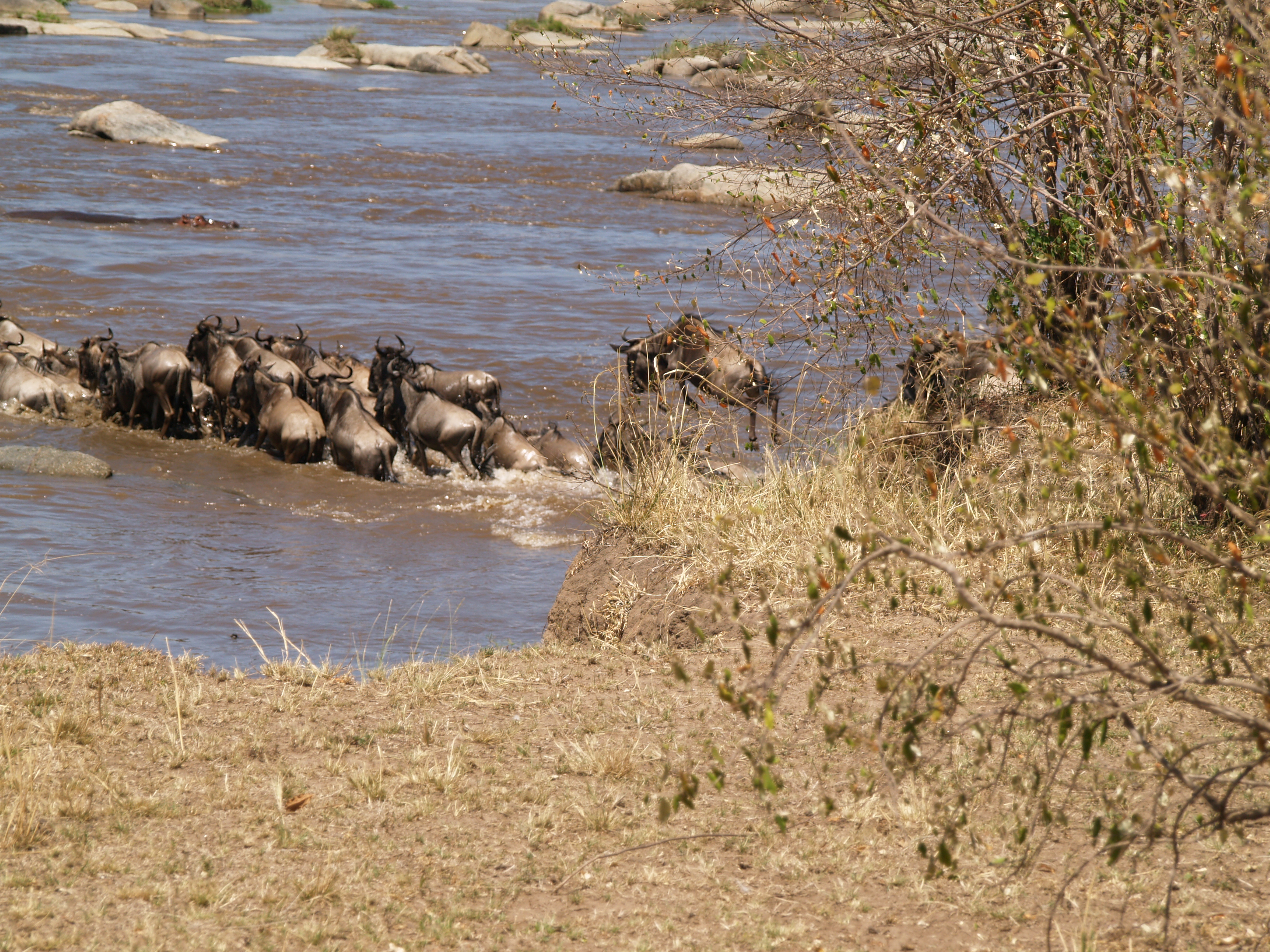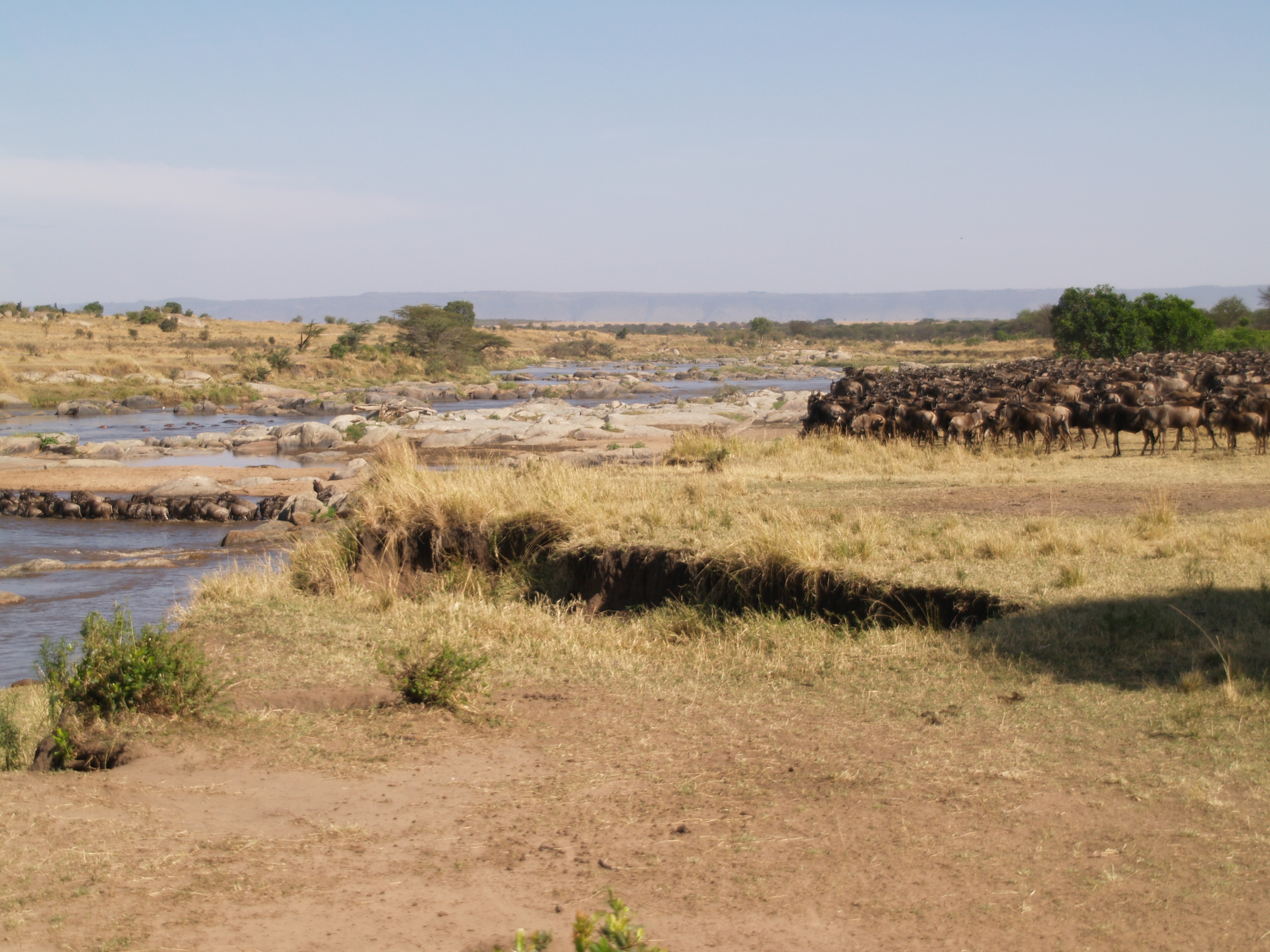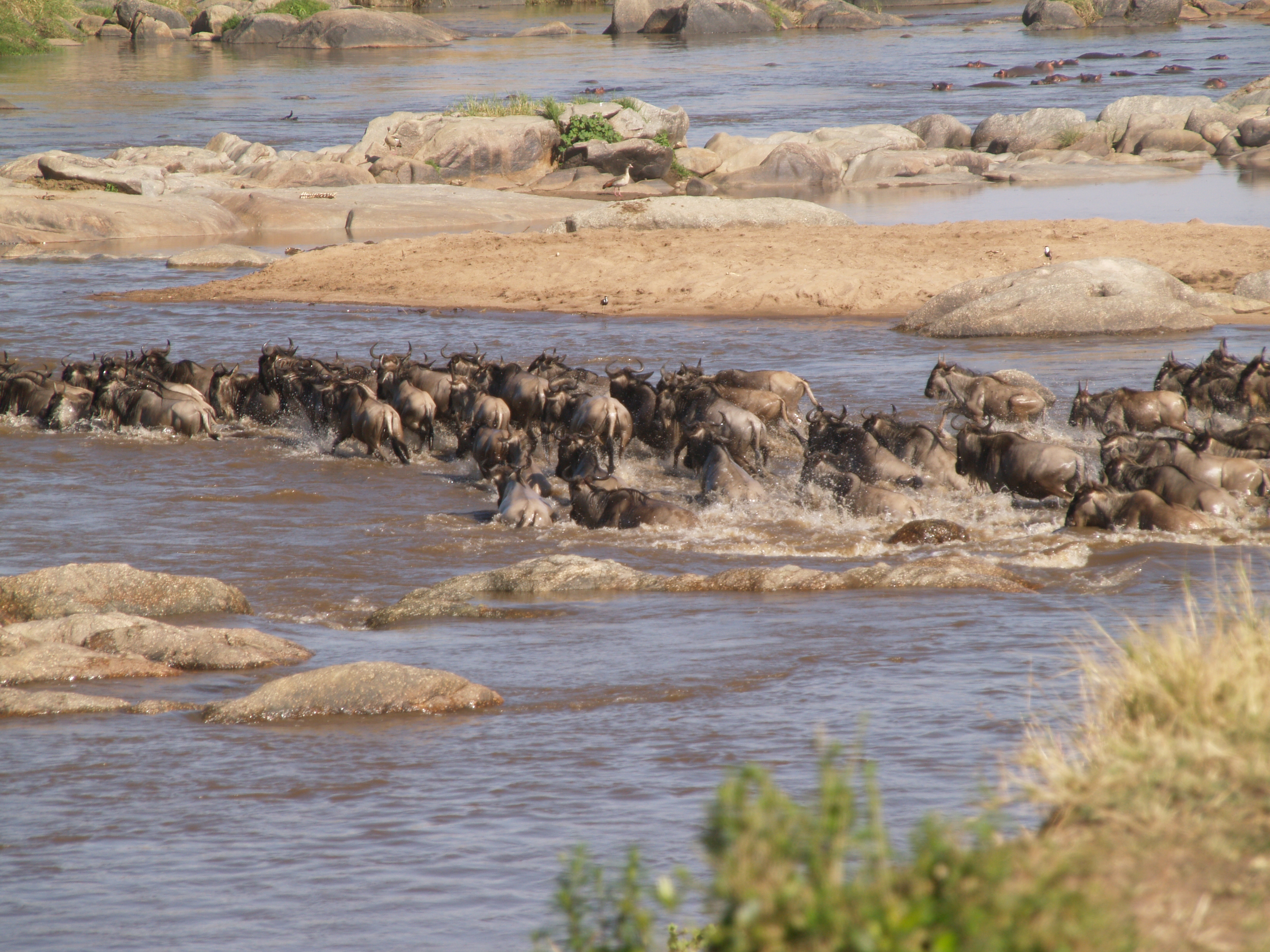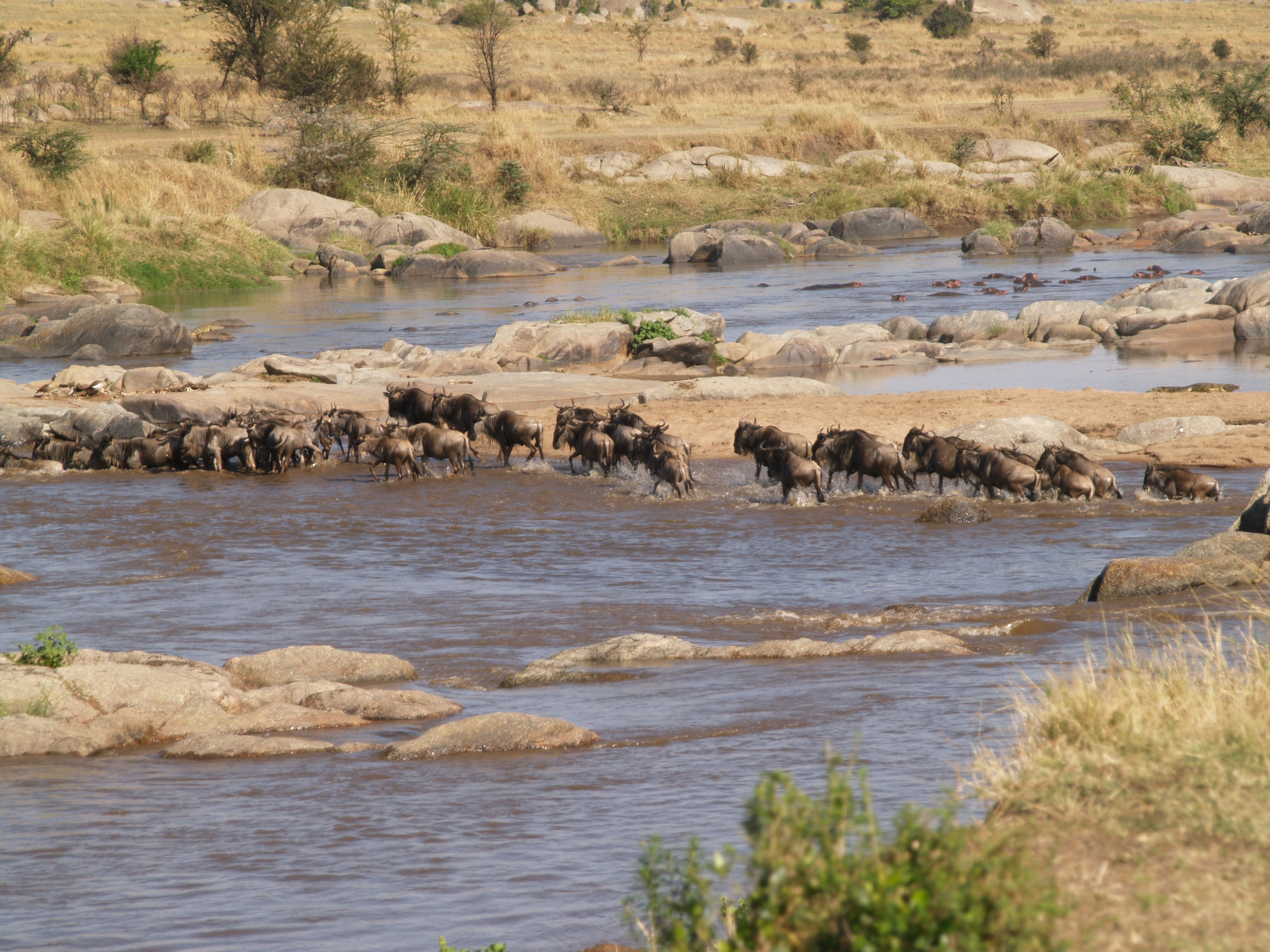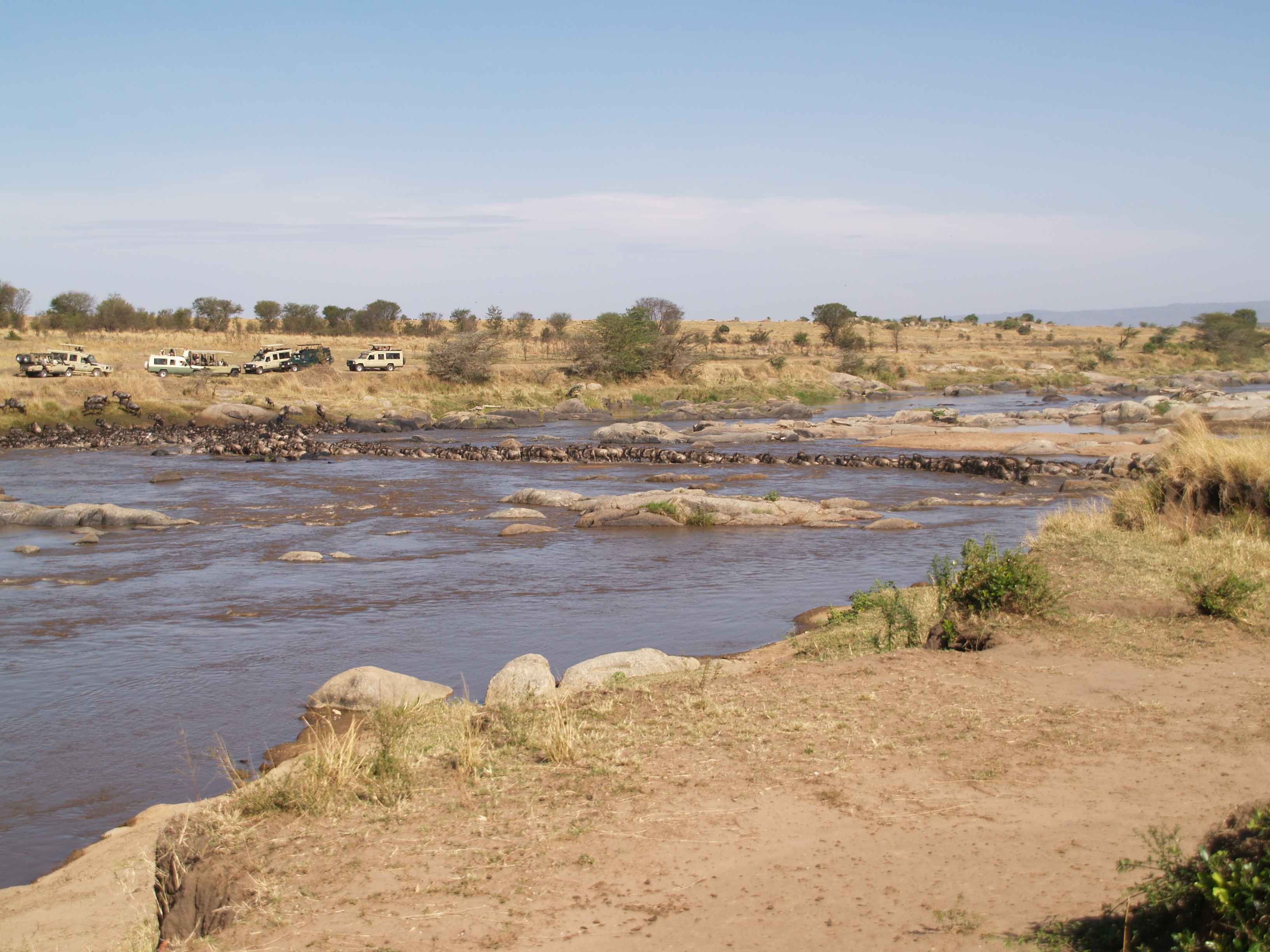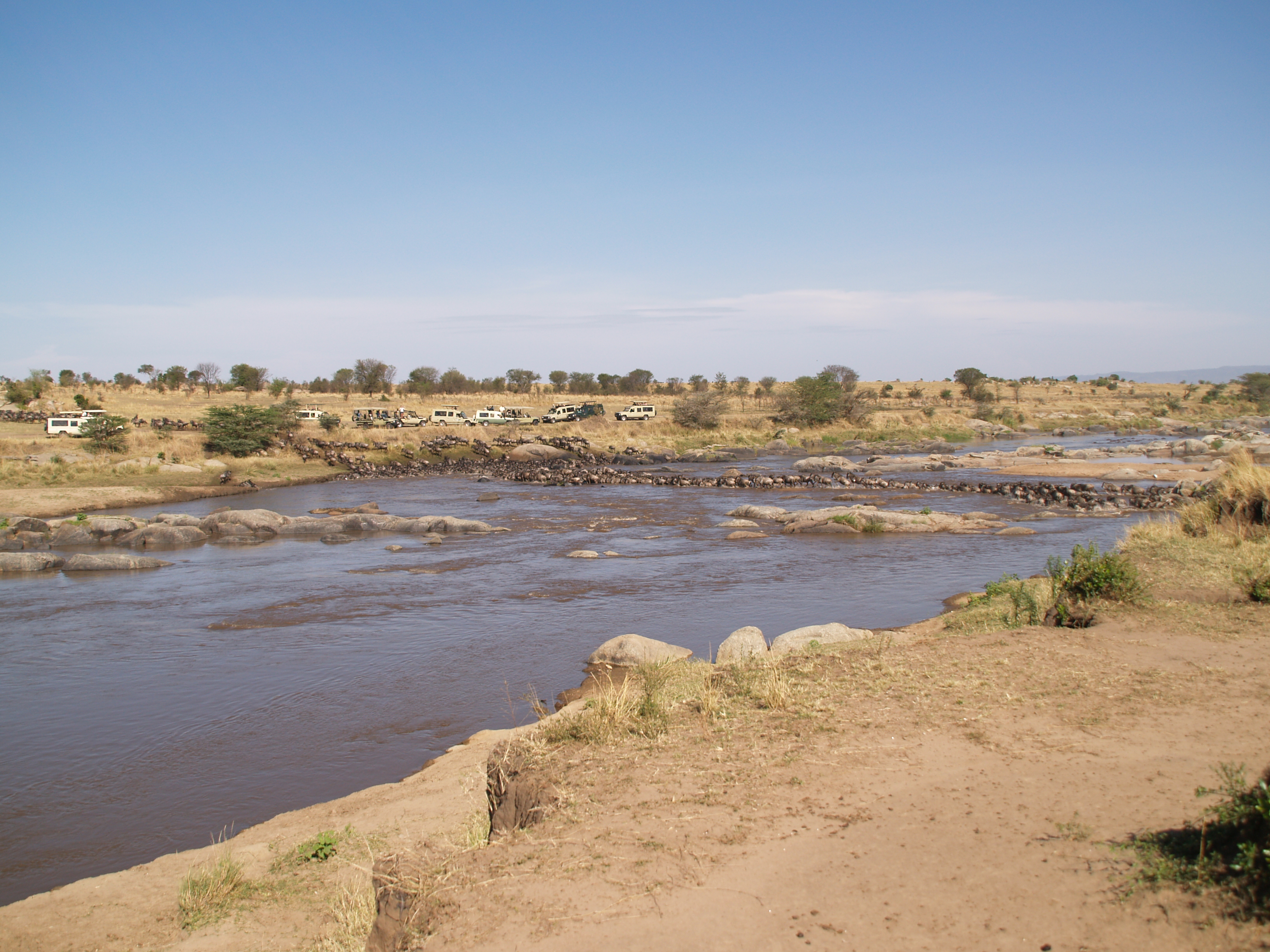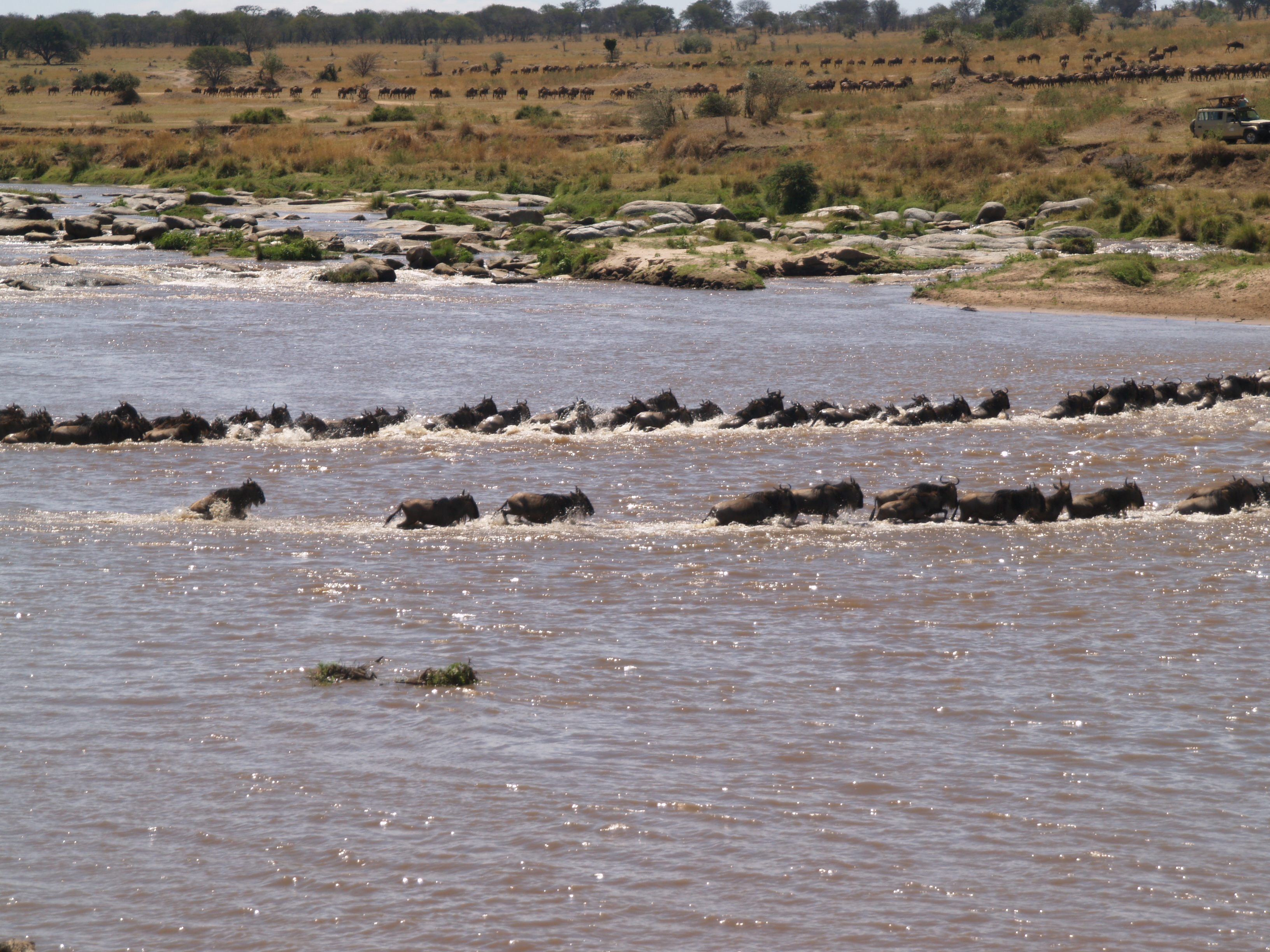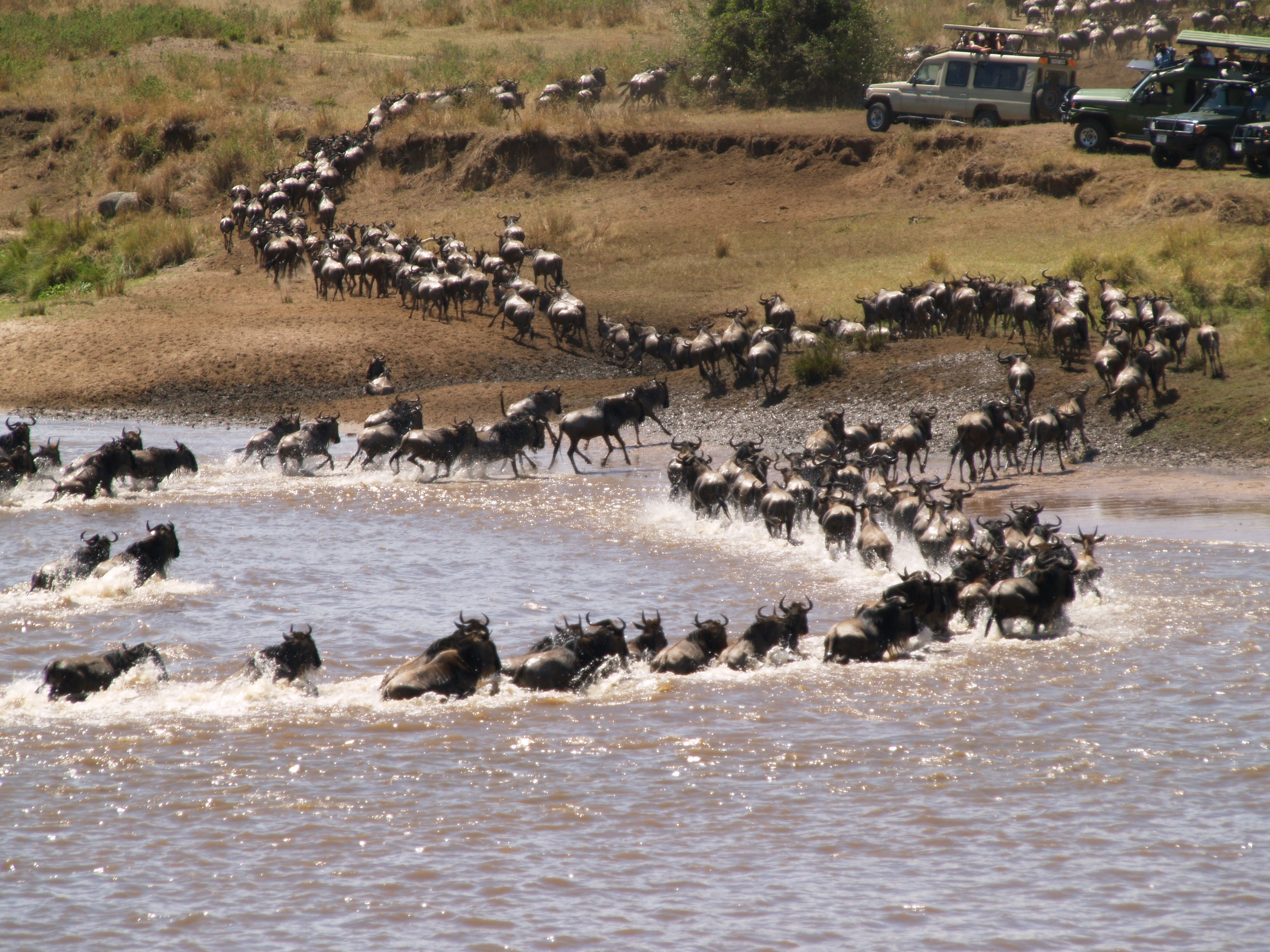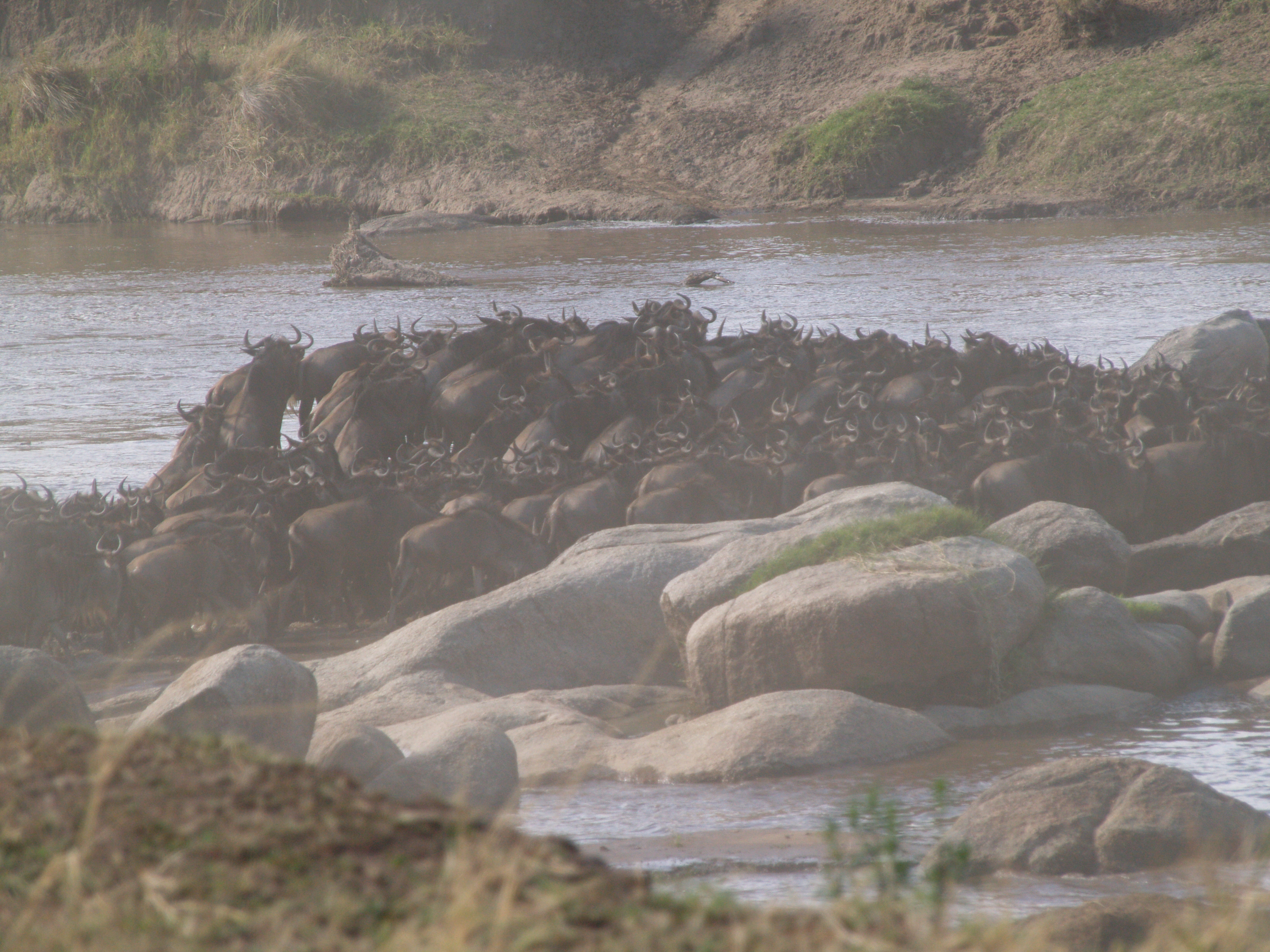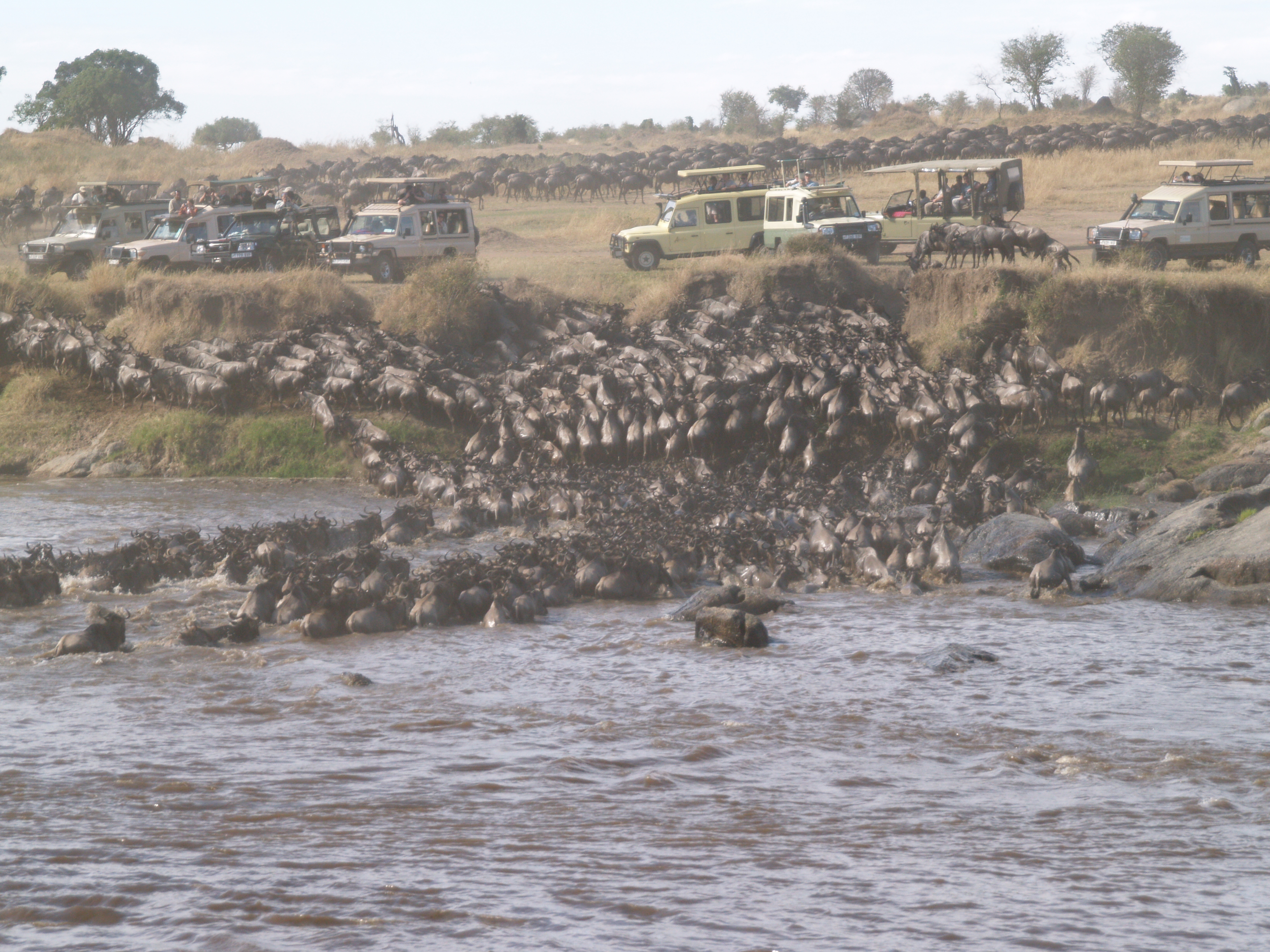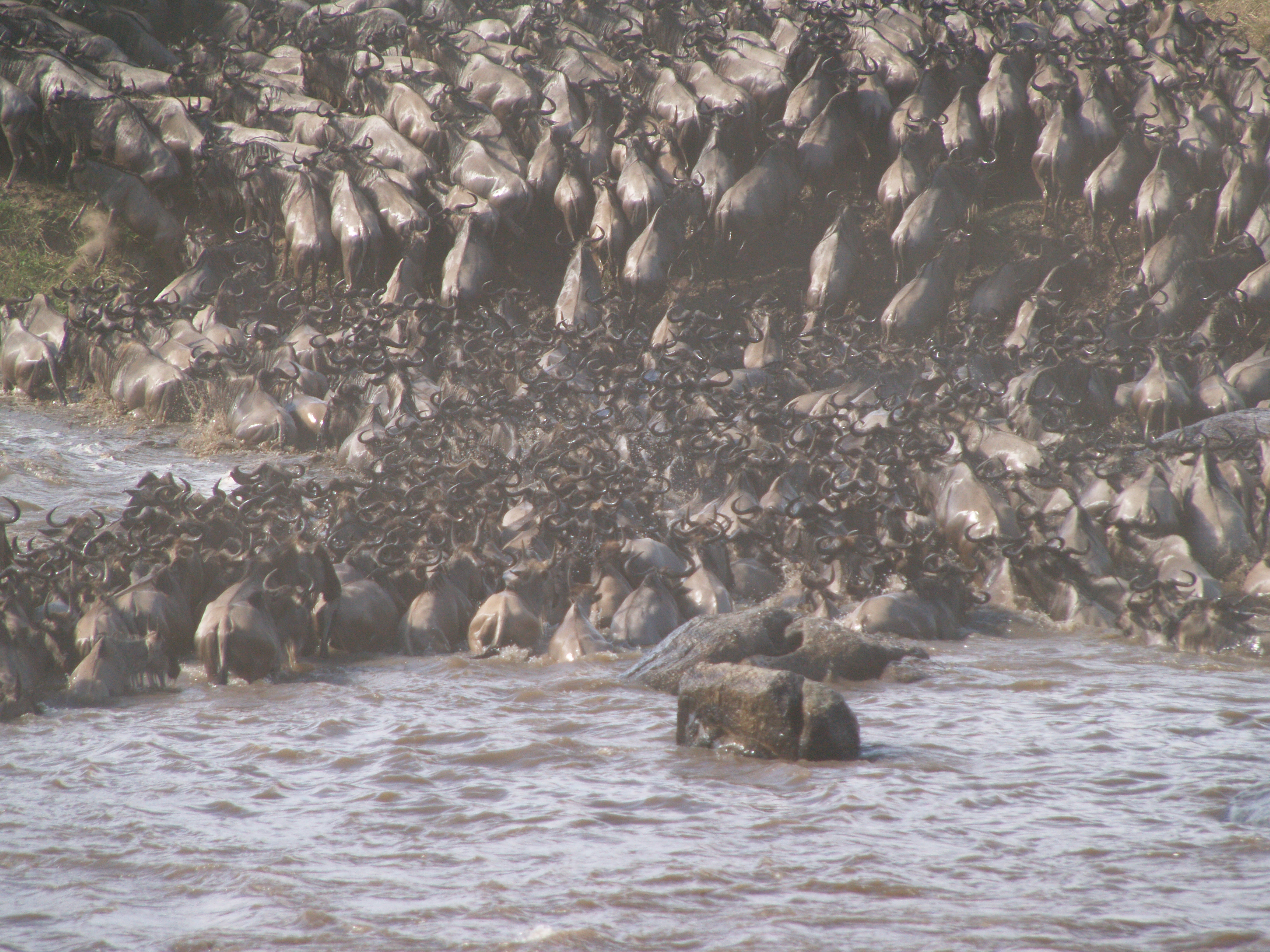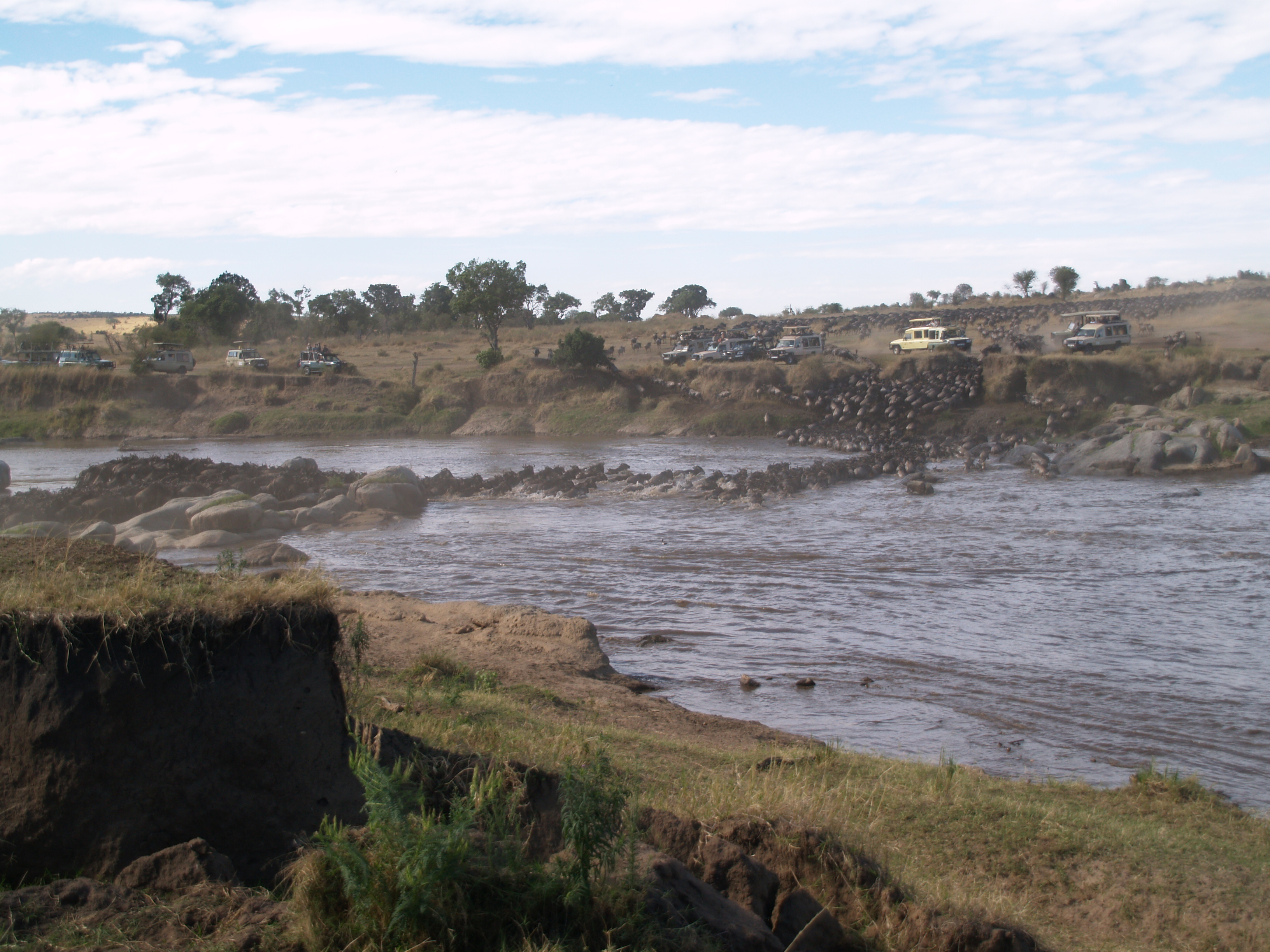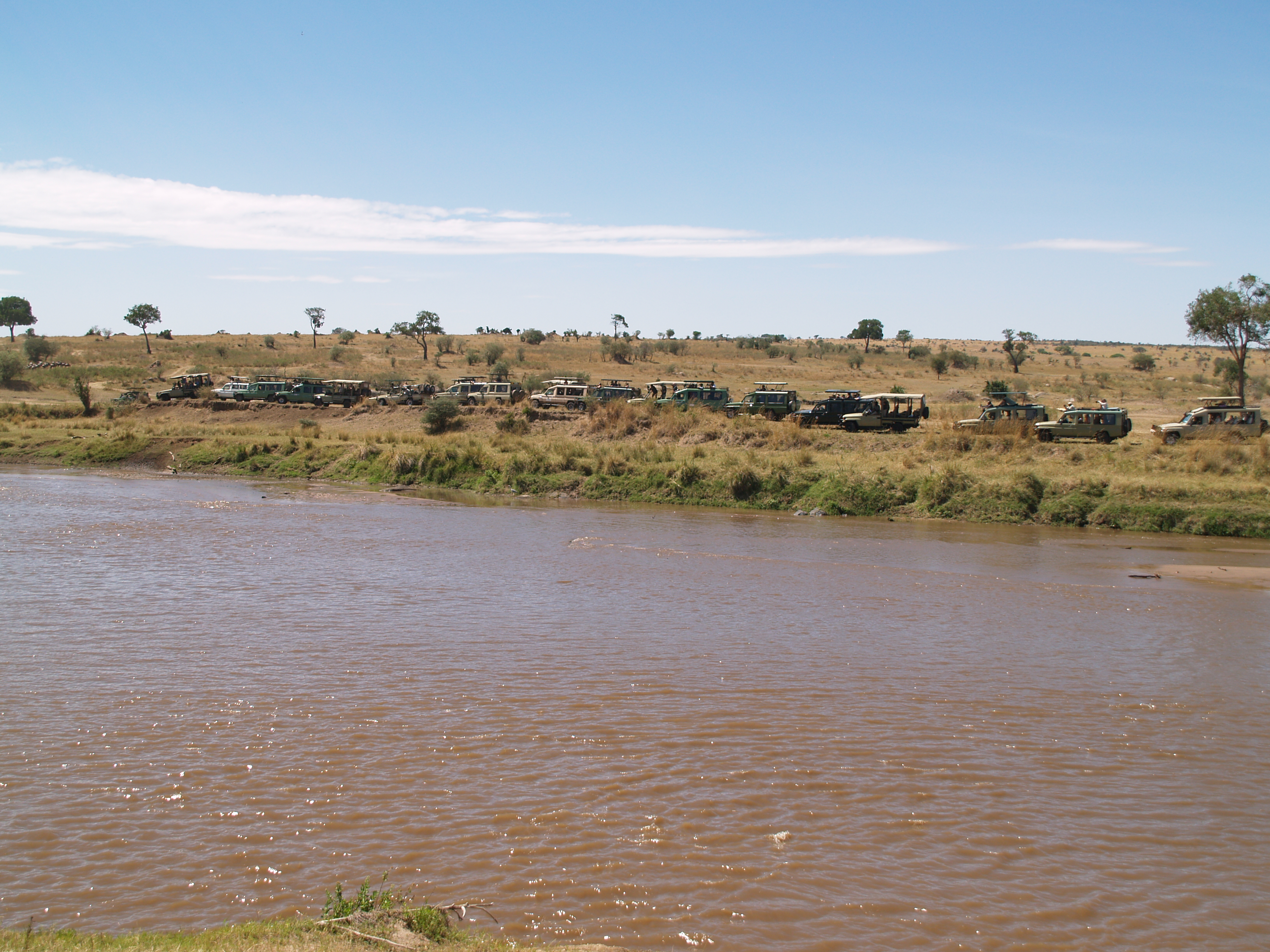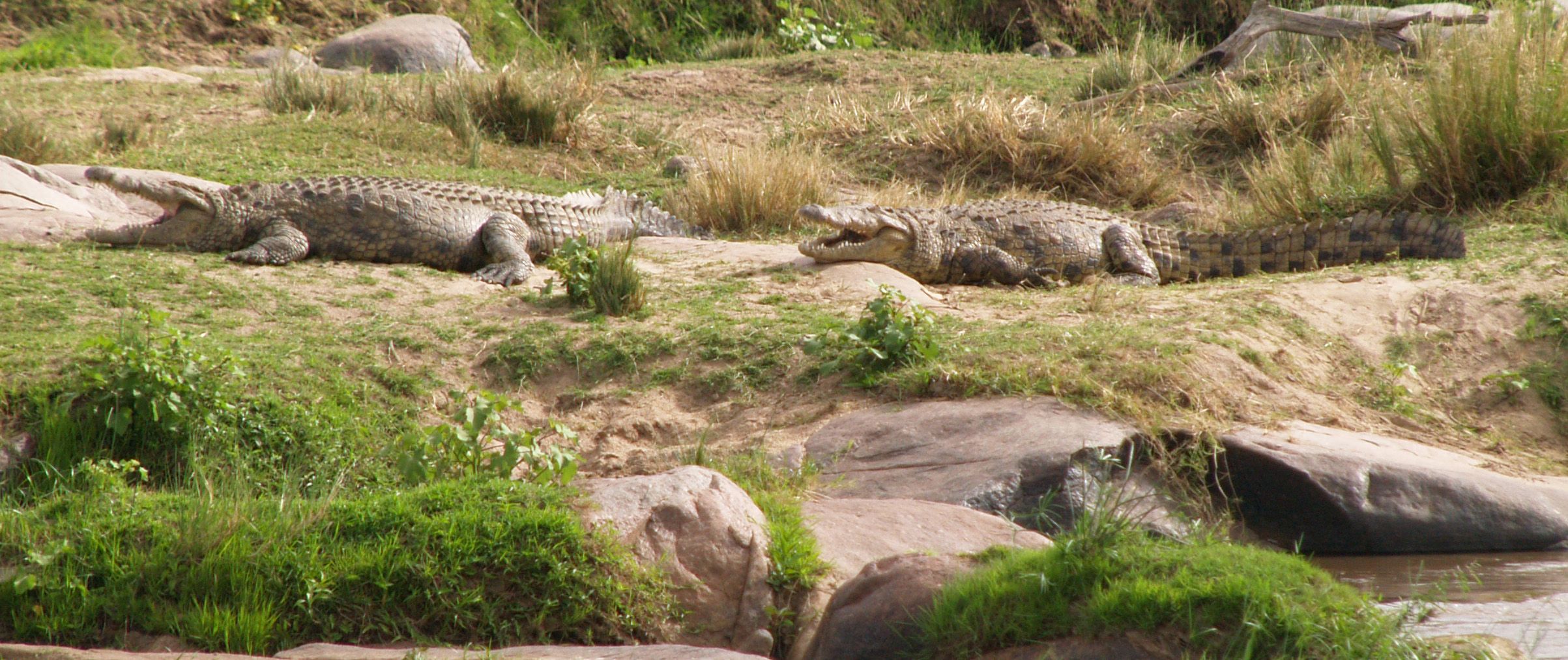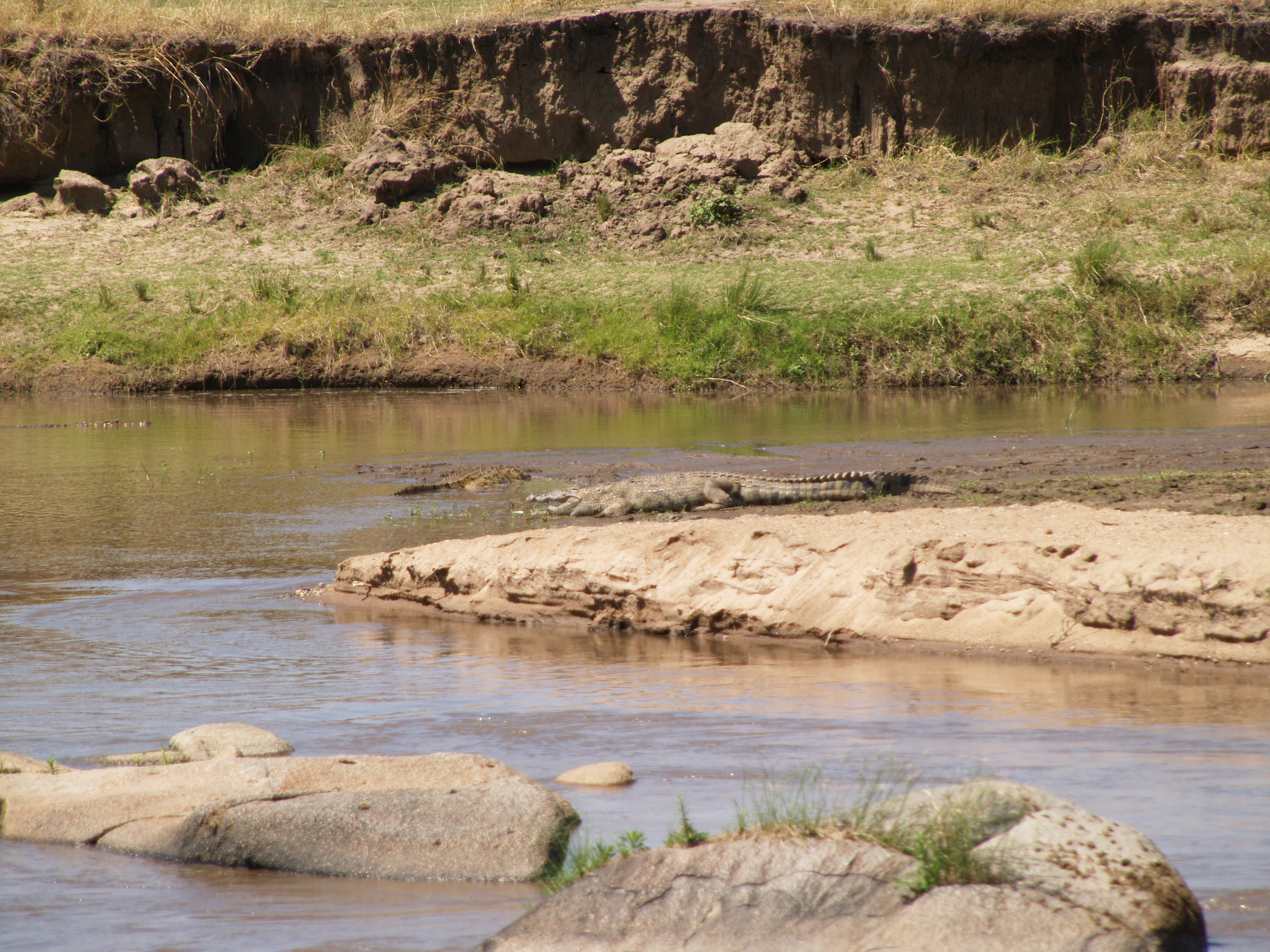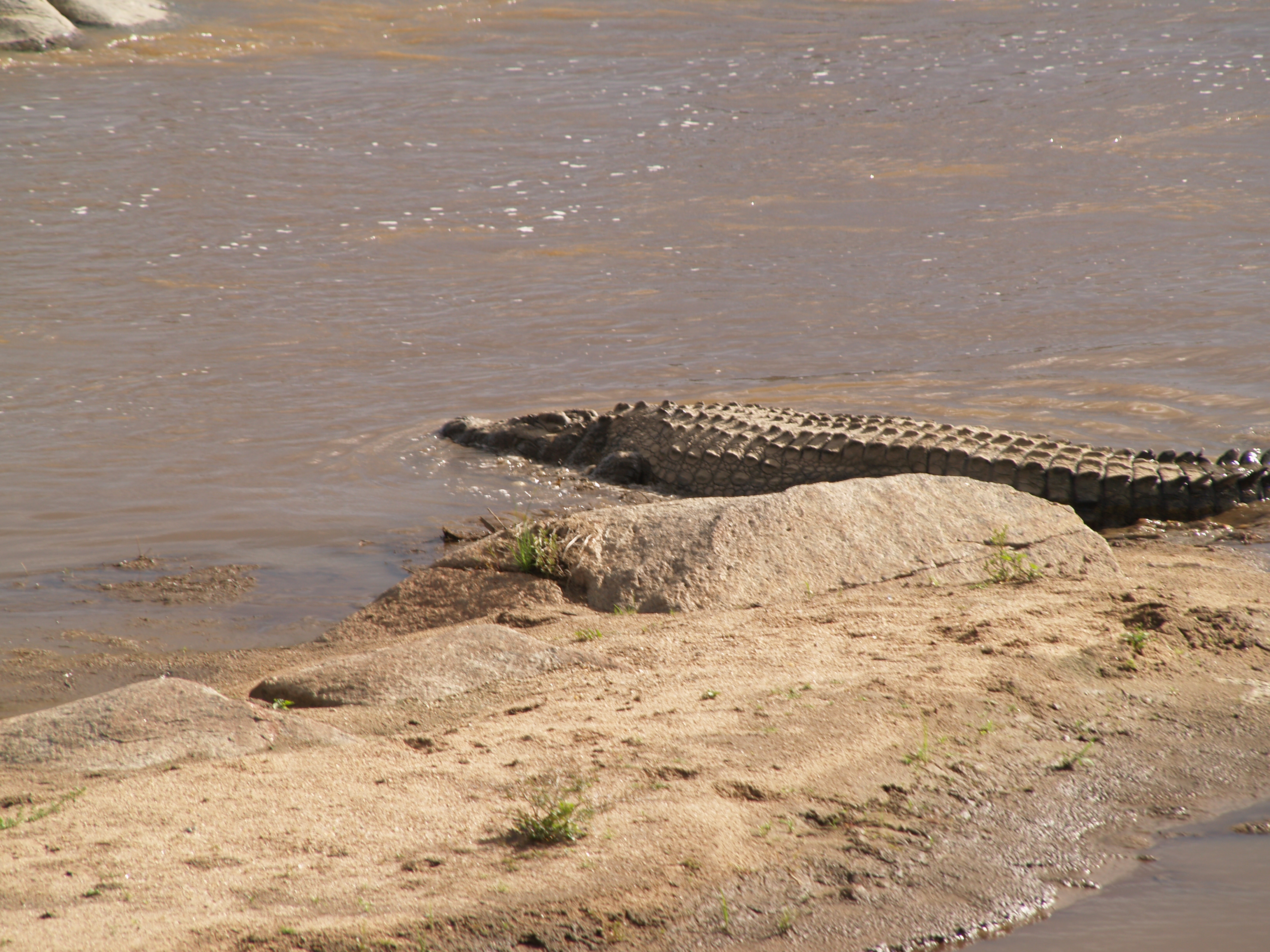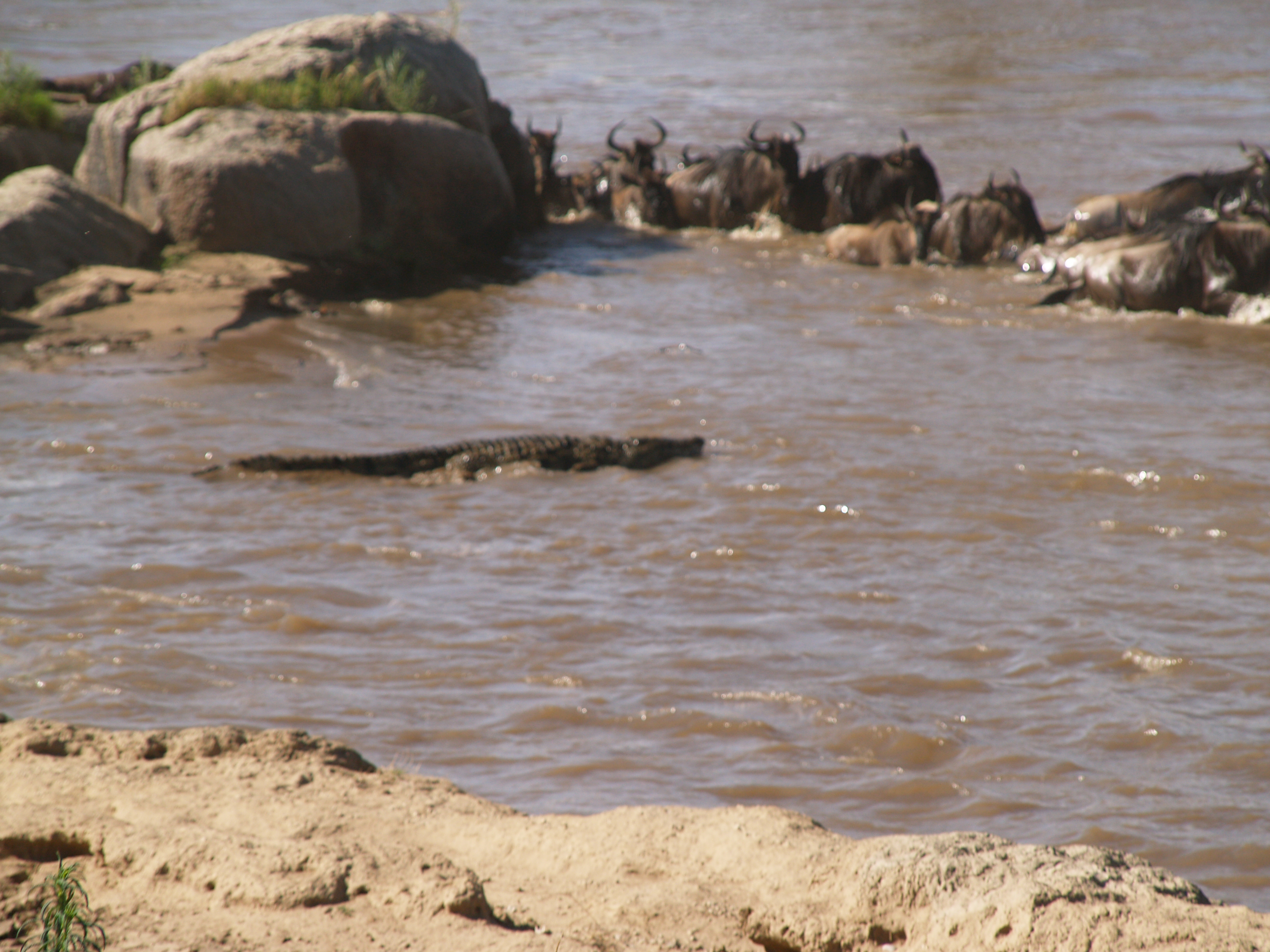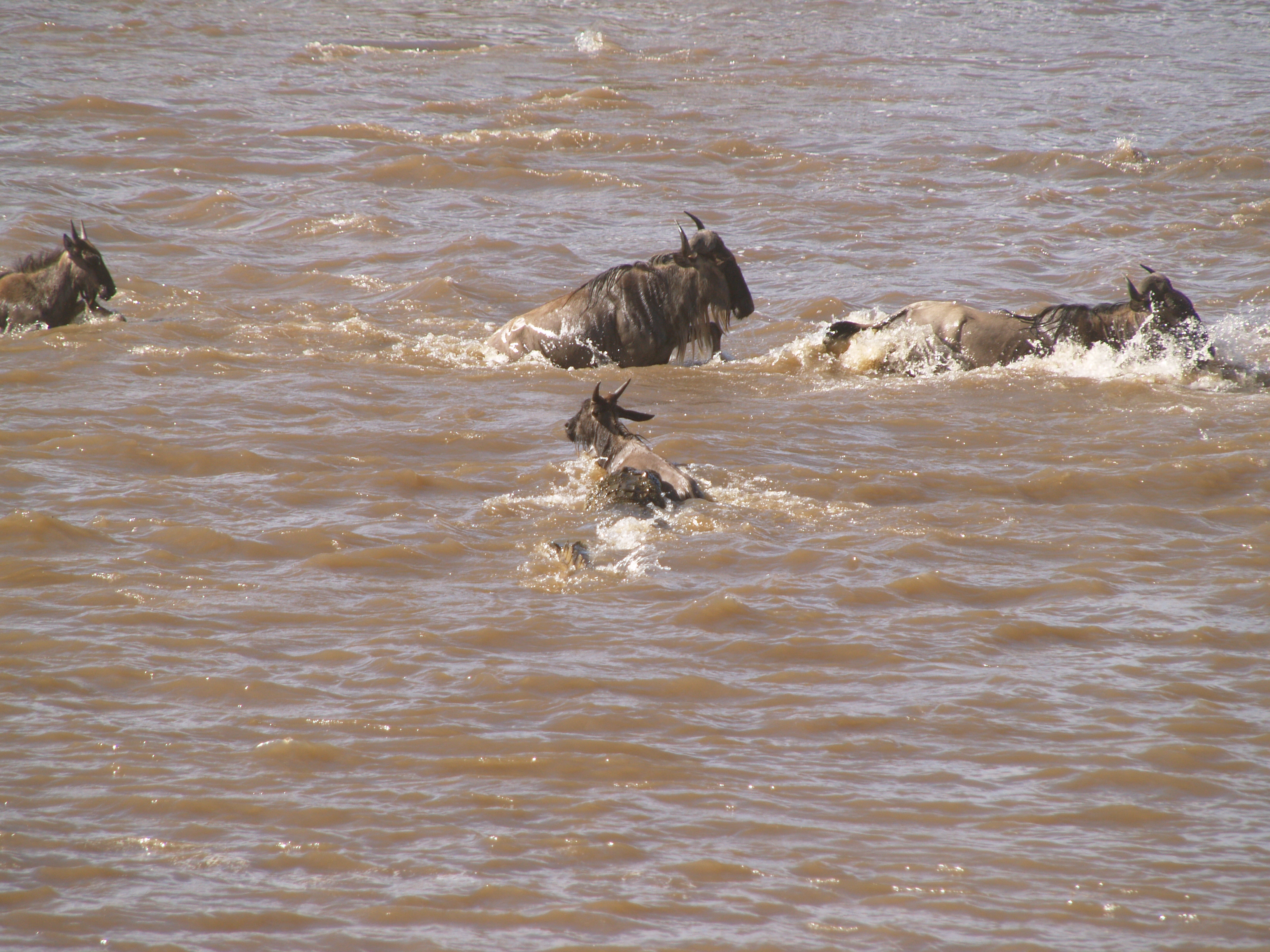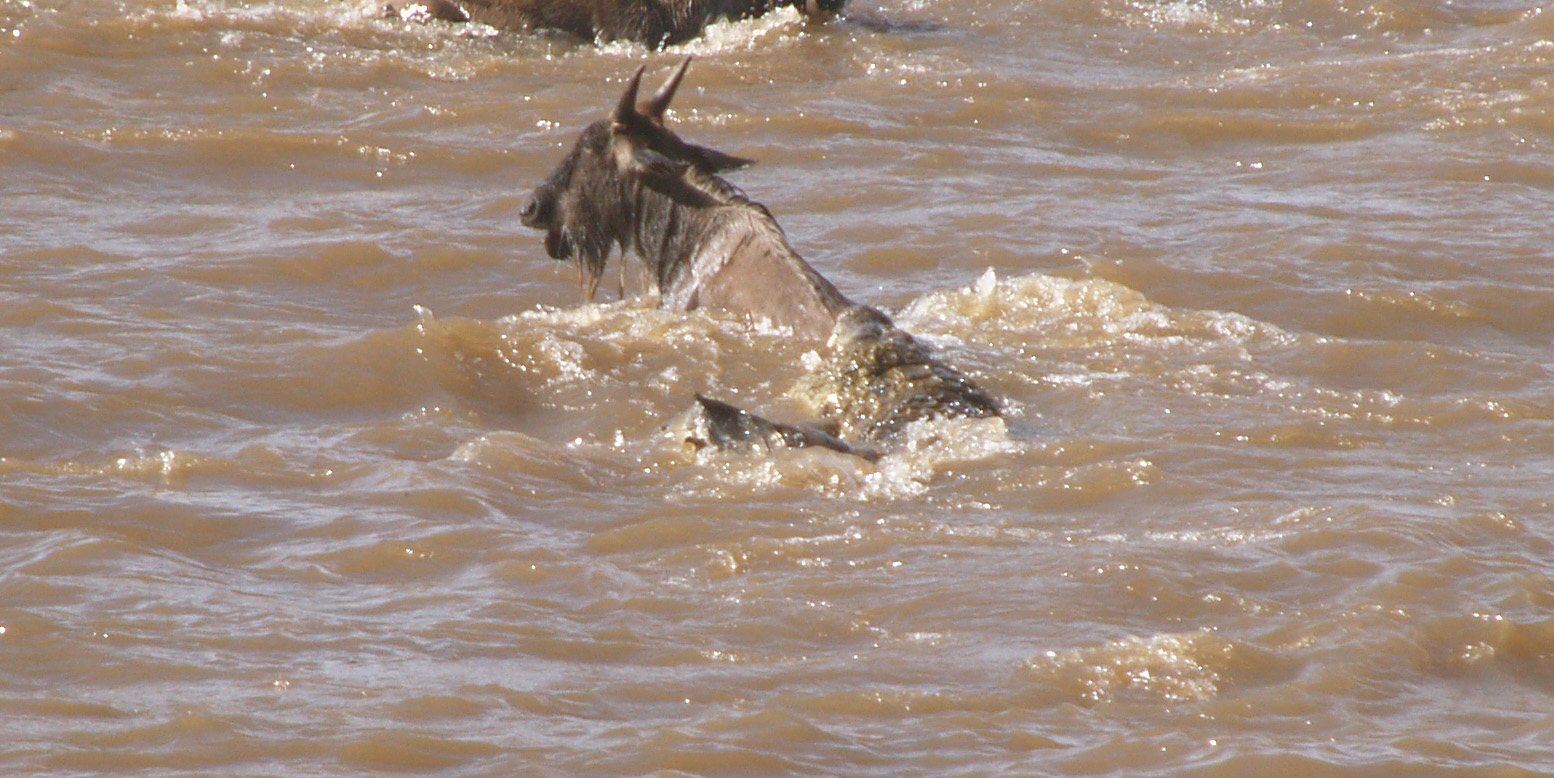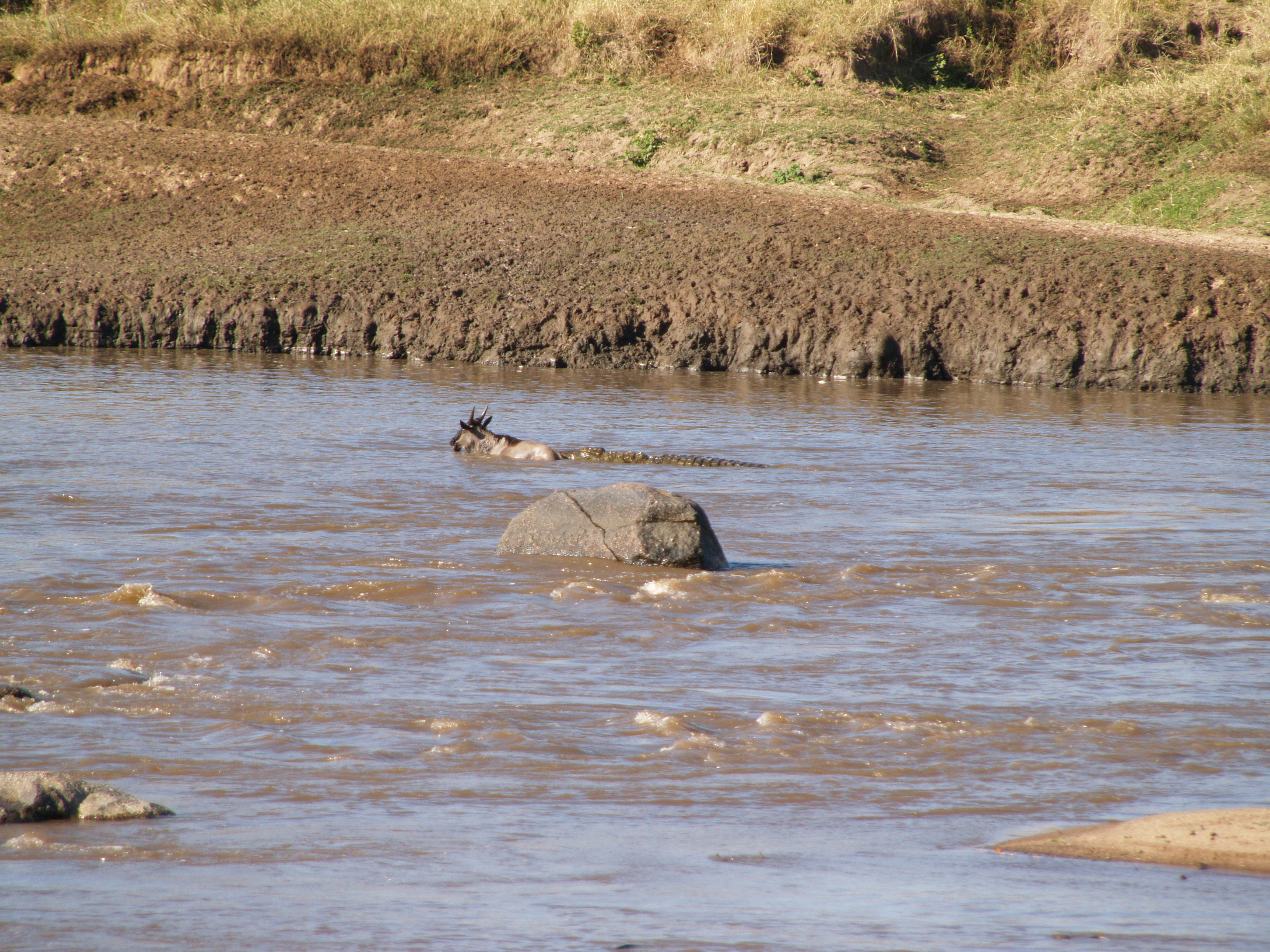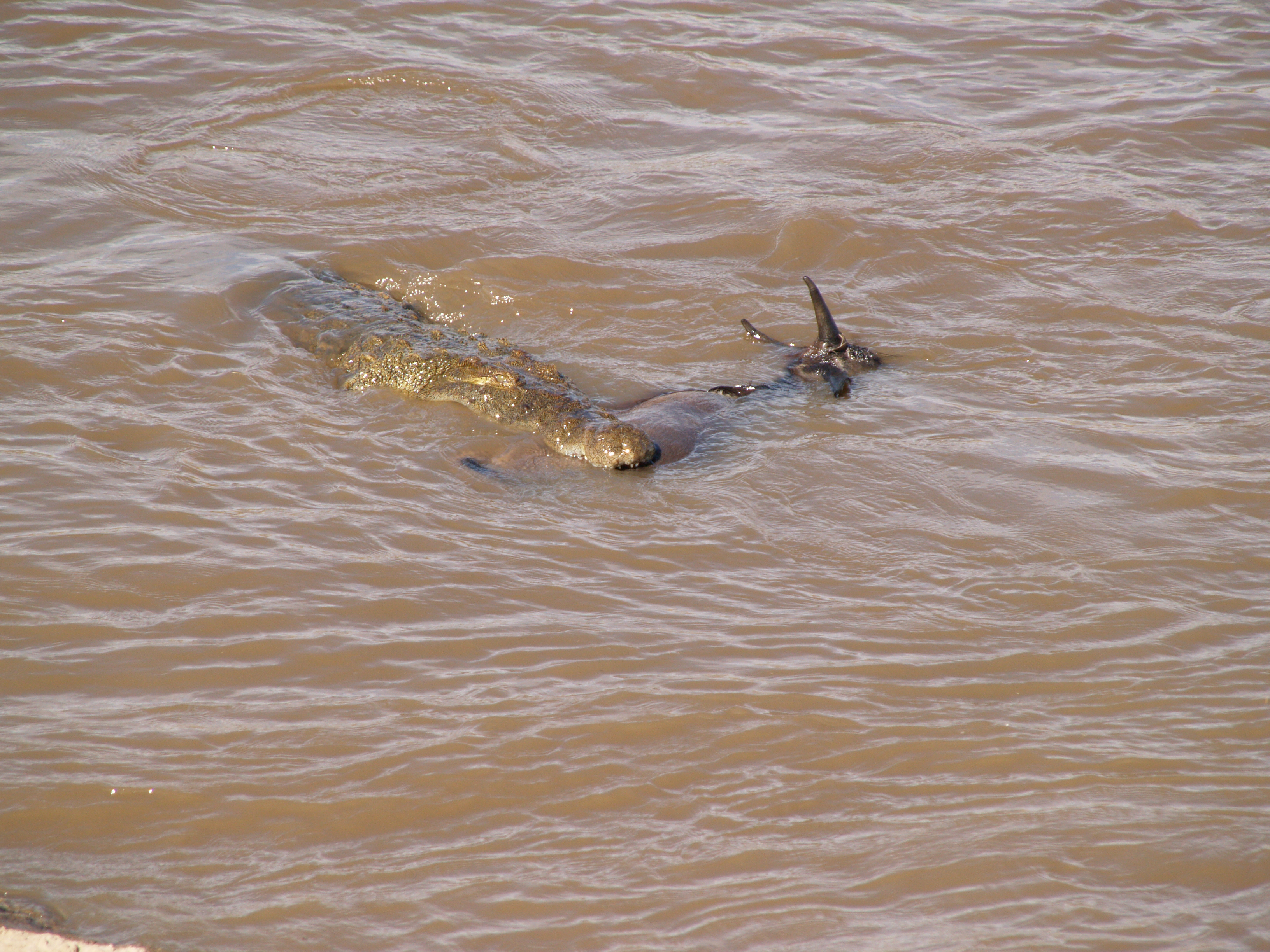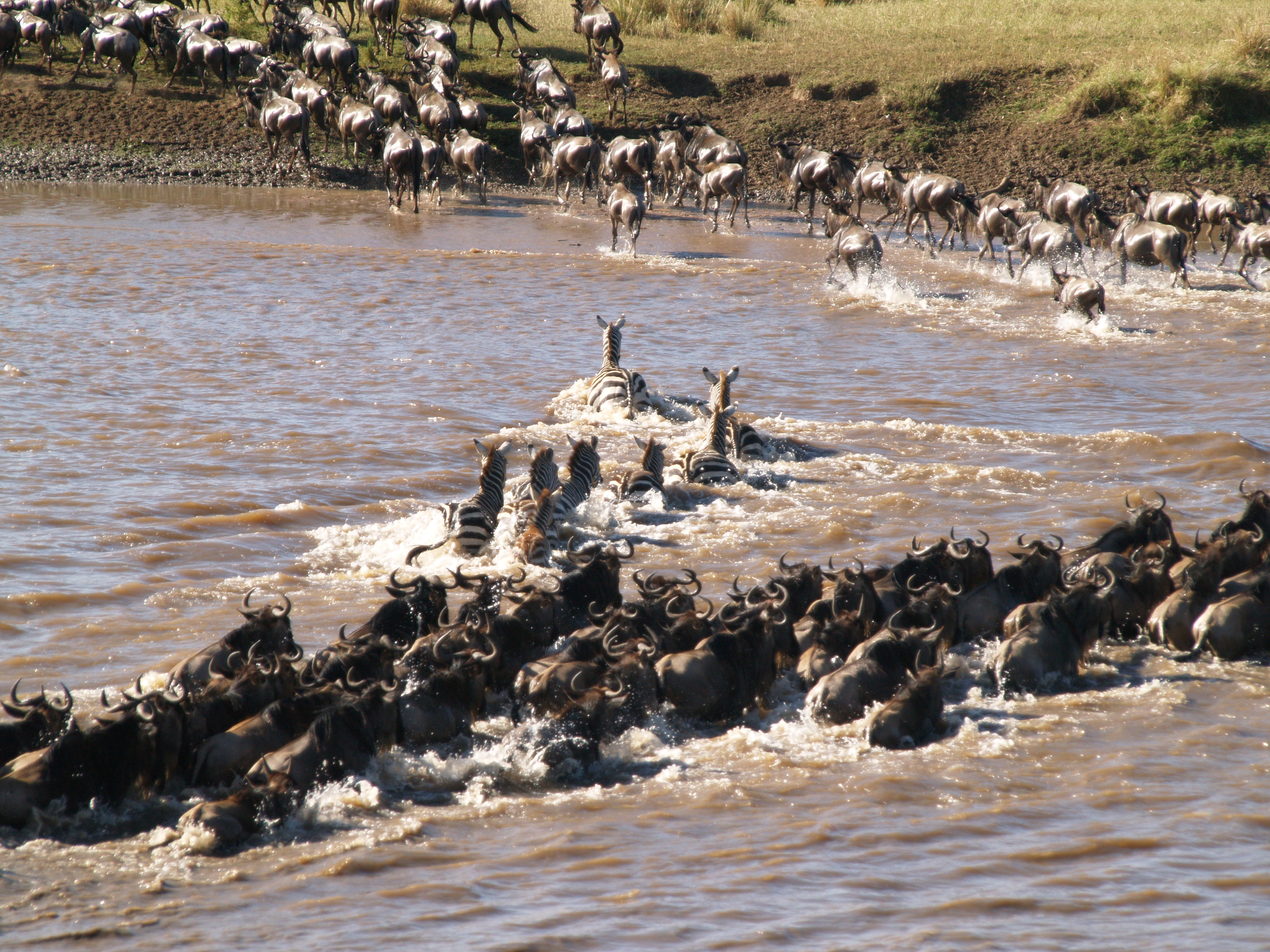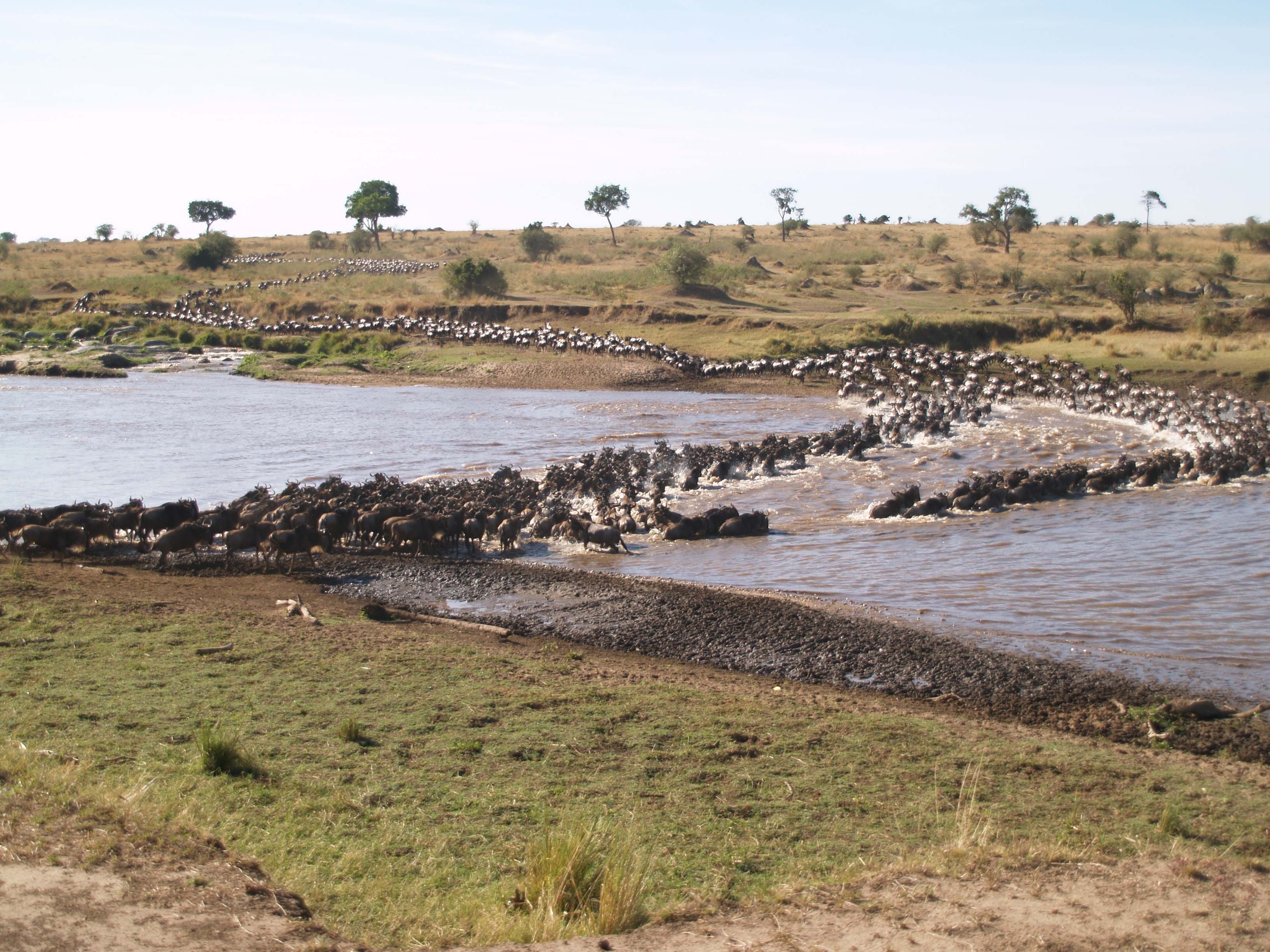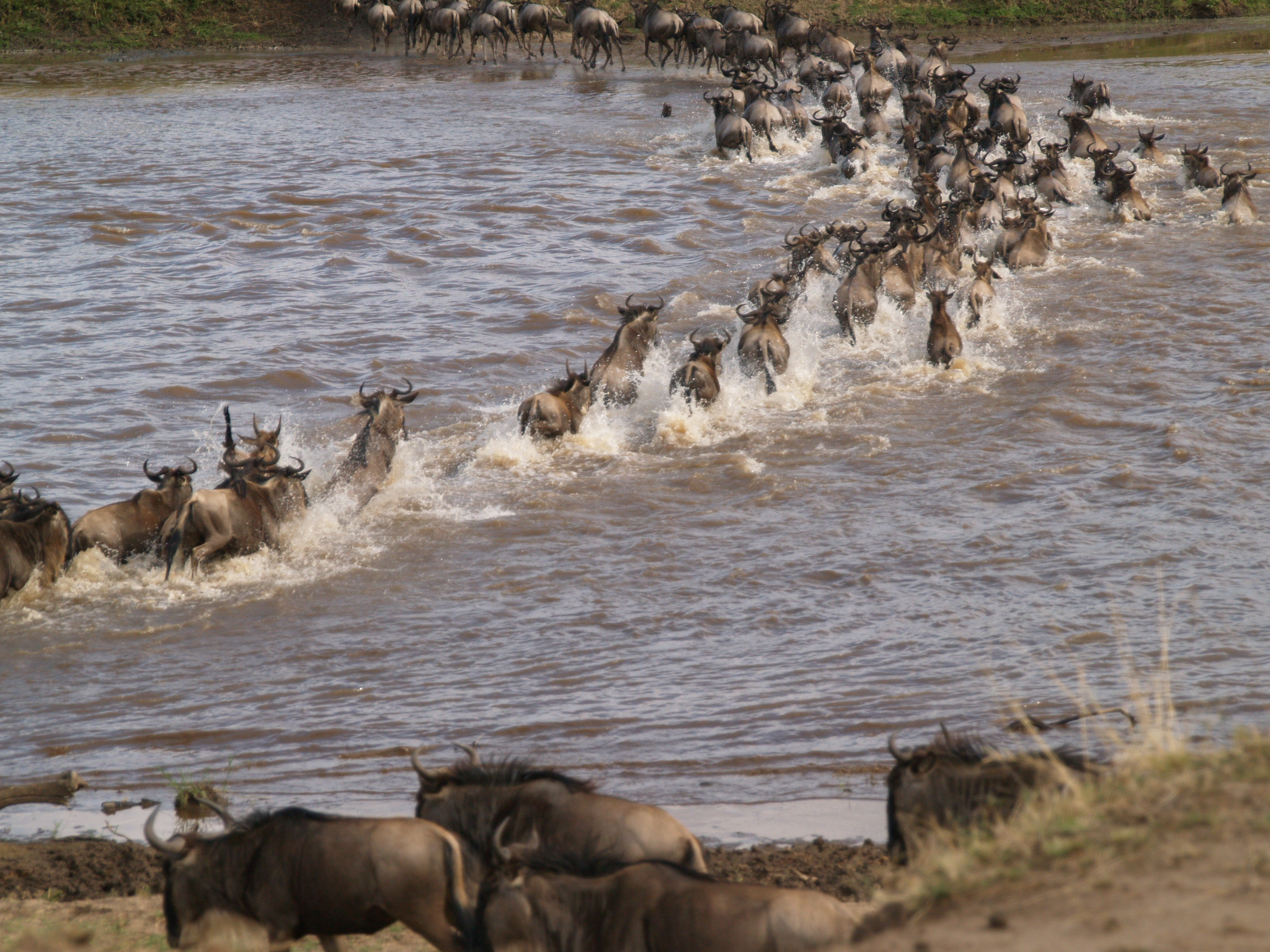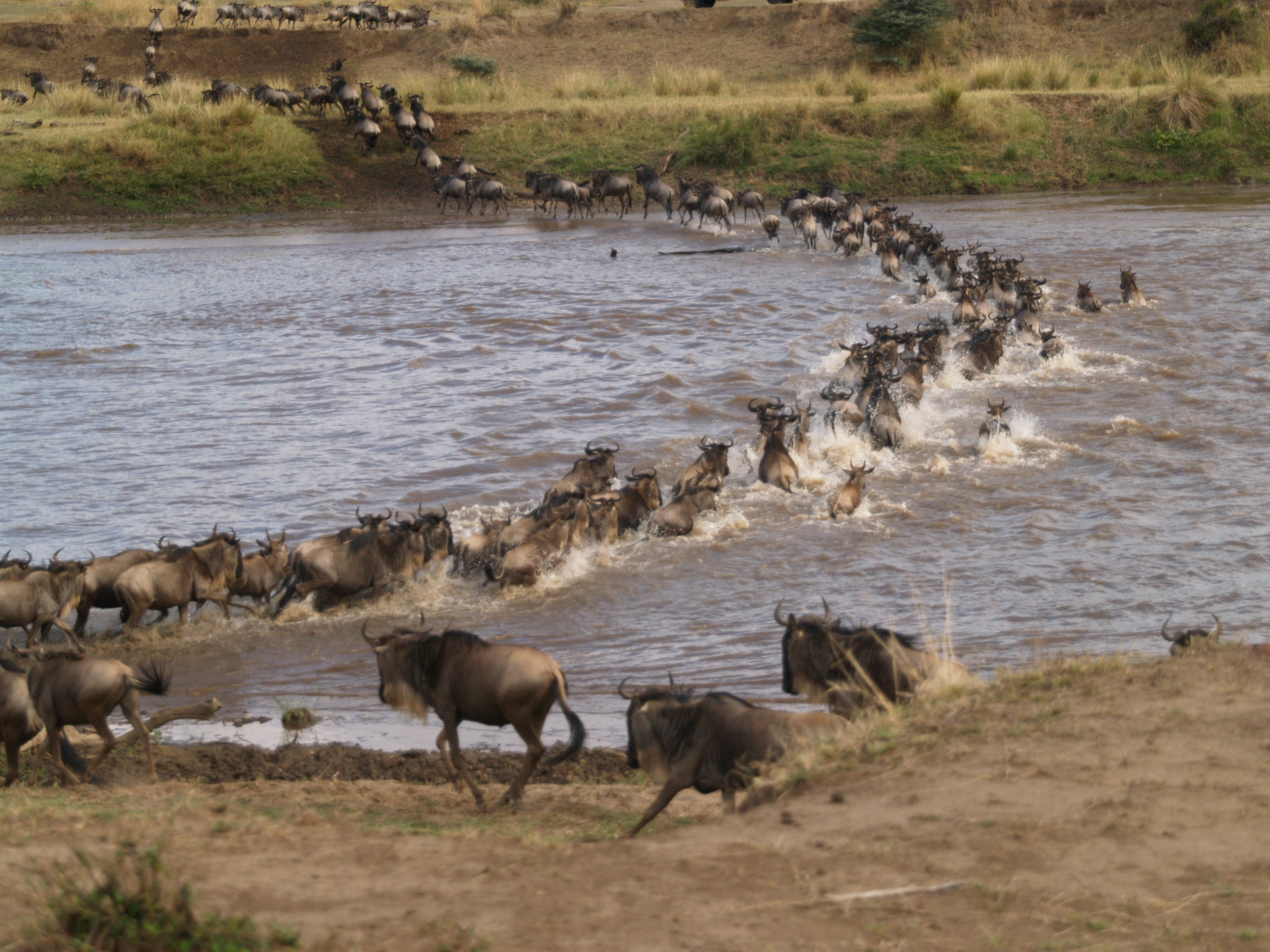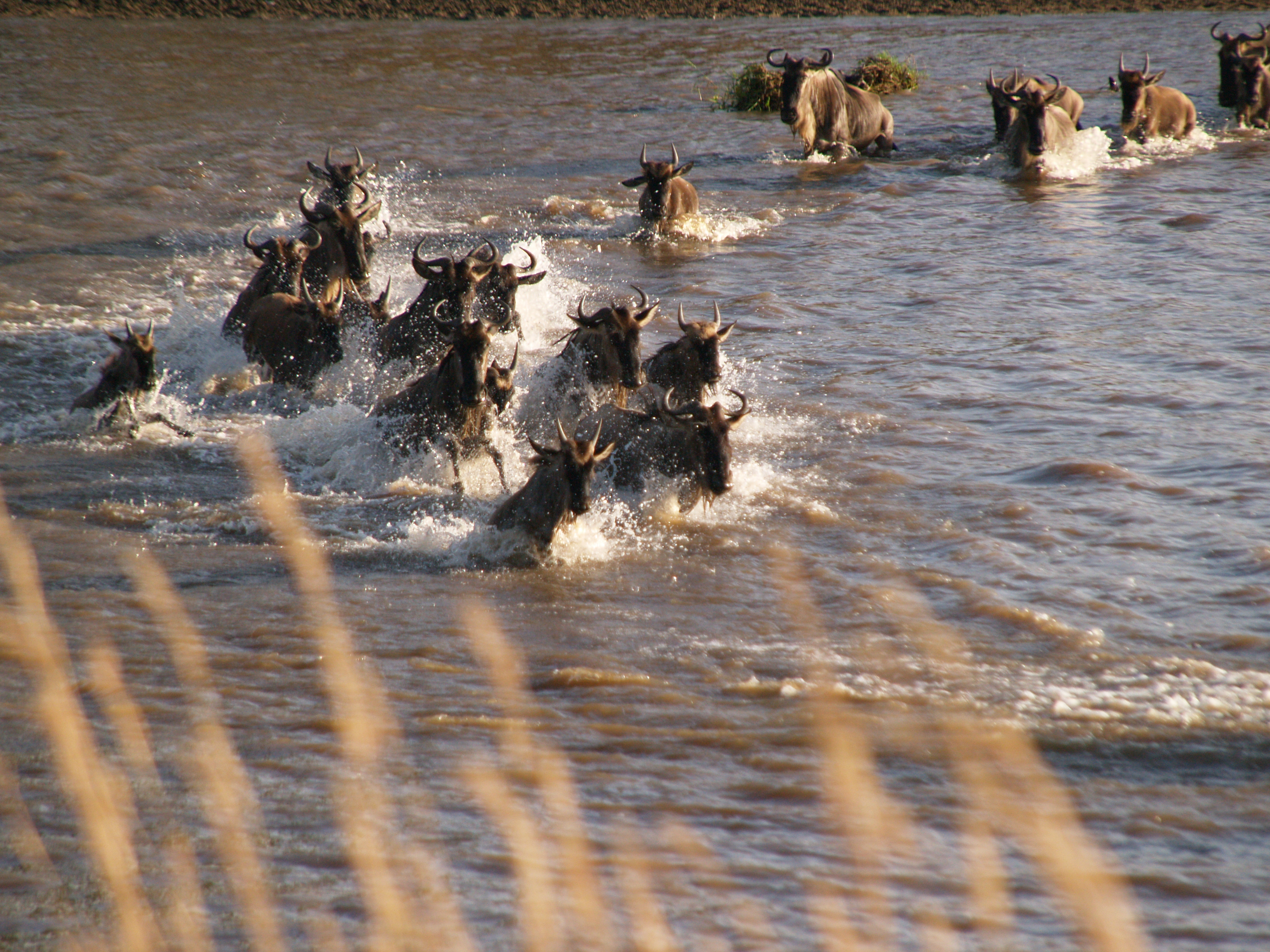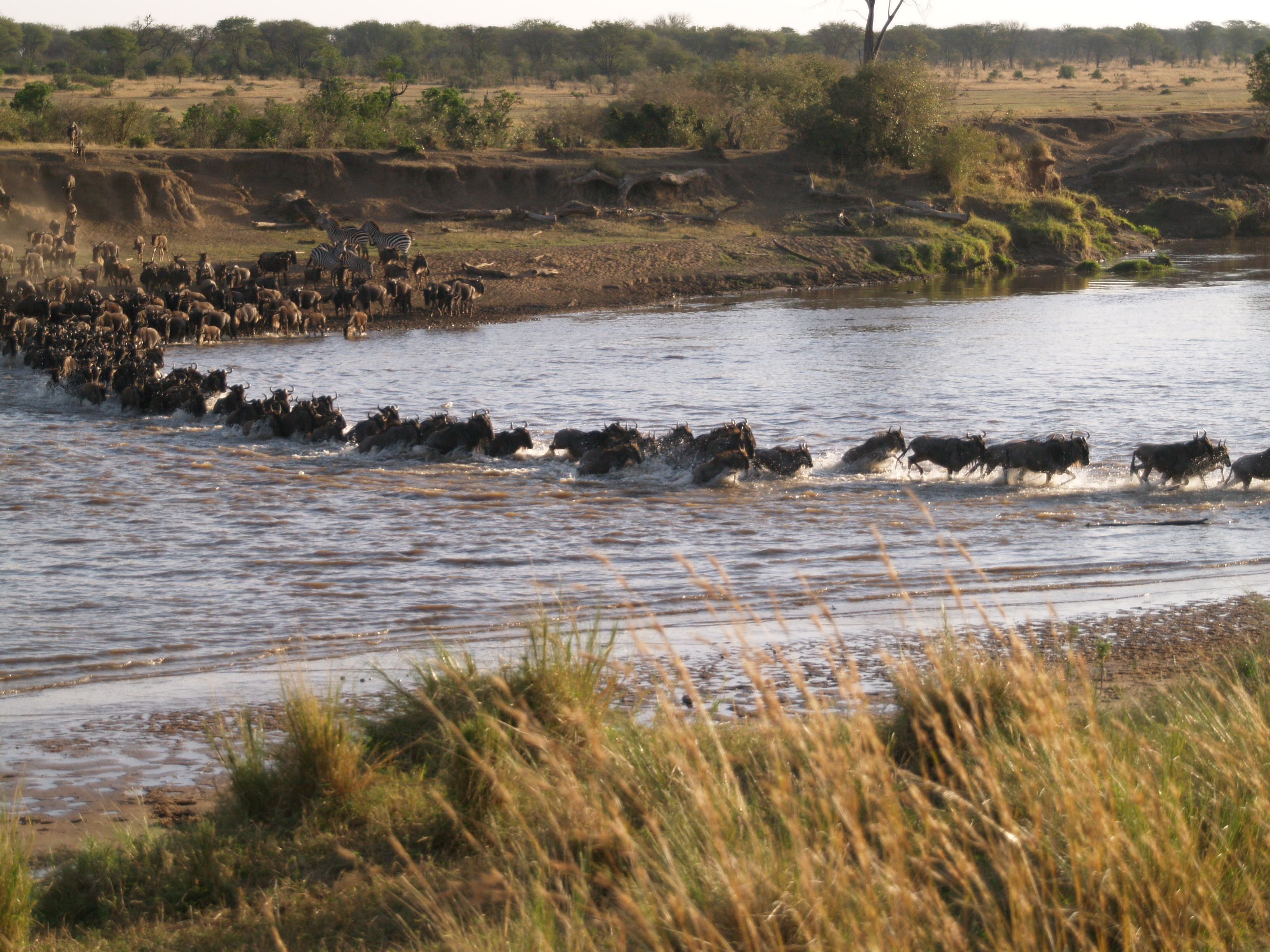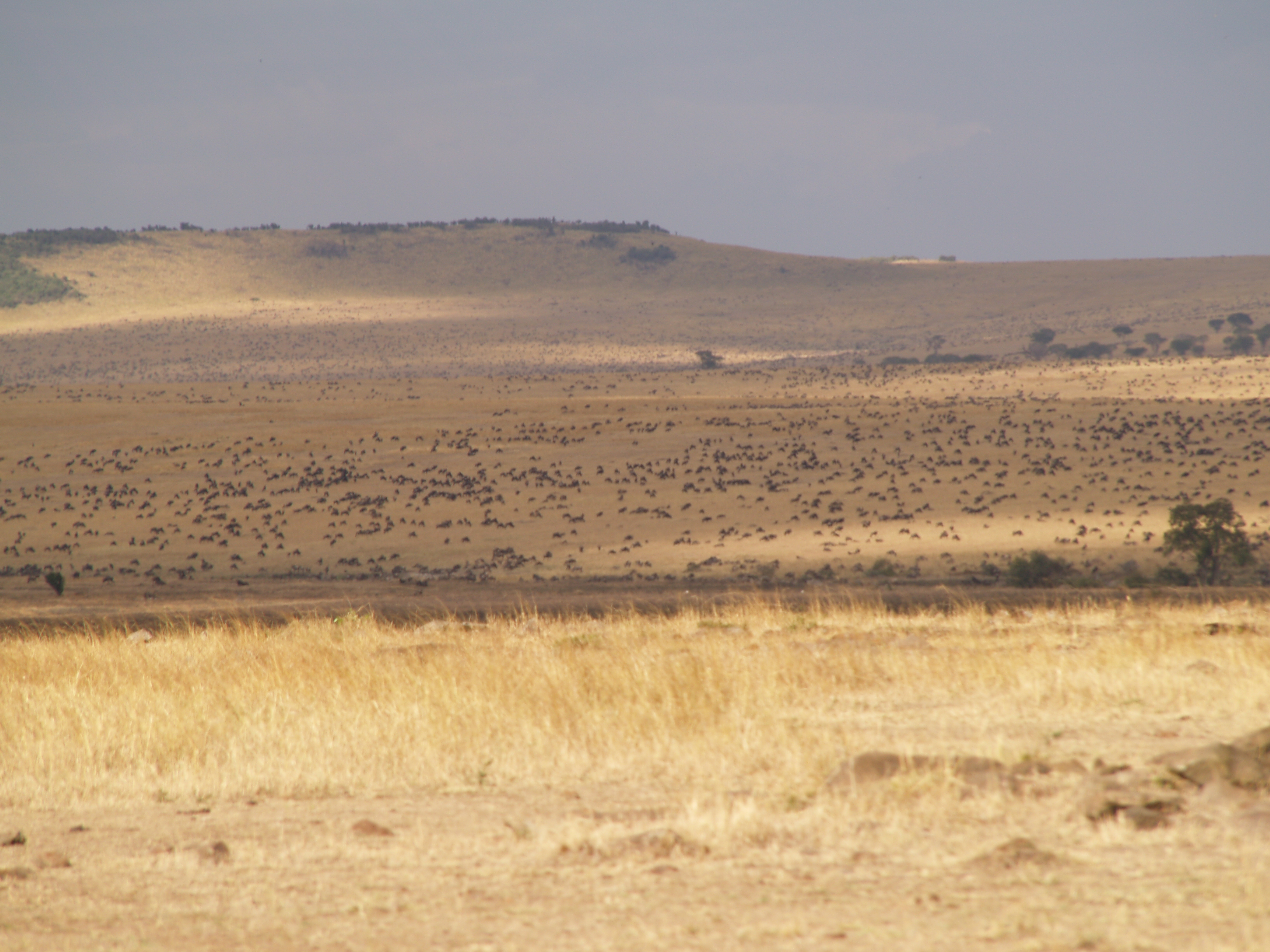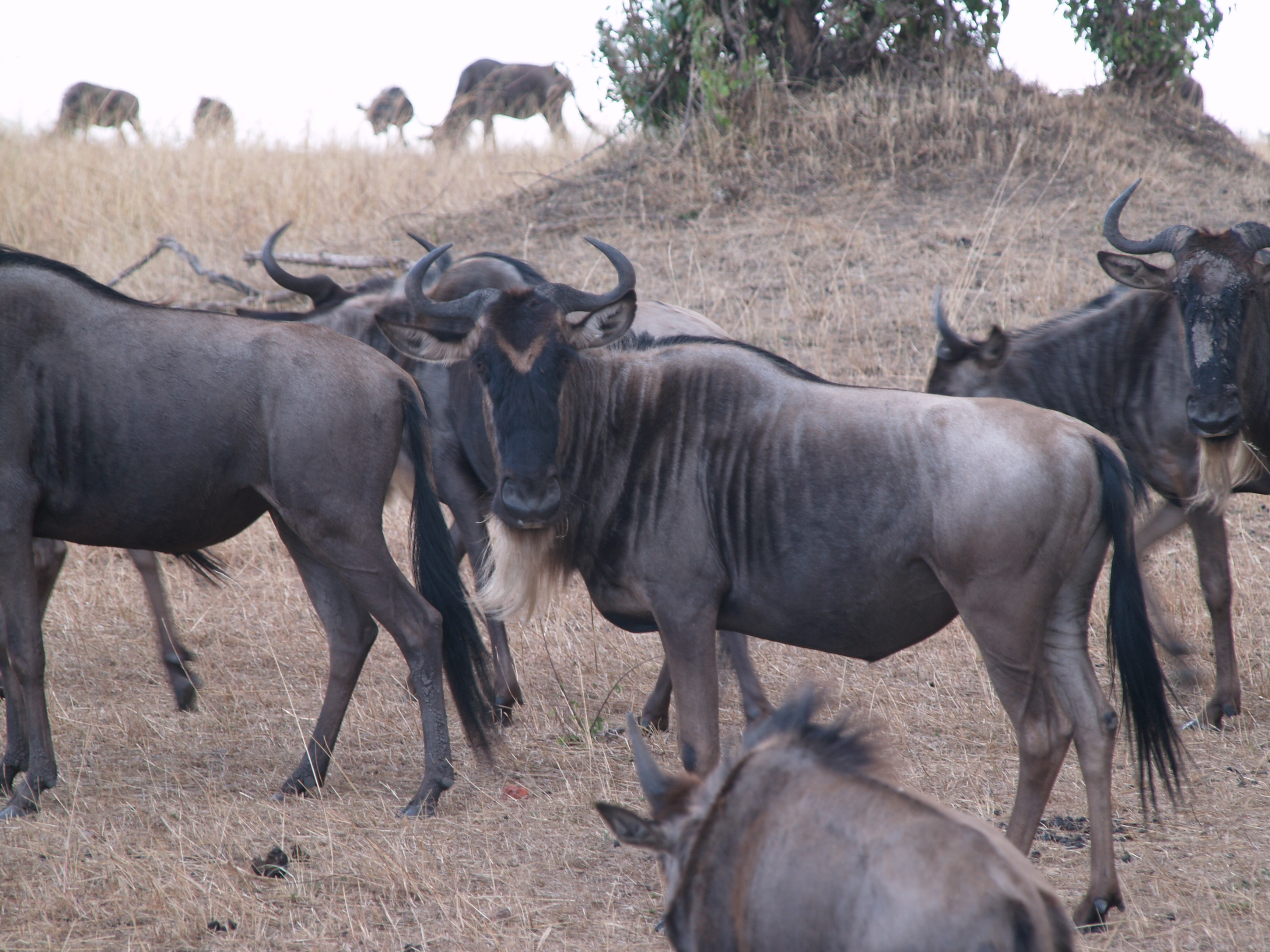The Serengeti National Park is Tanzania’s oldest park, it is a world heritage site, and one of Africa’s most famous game parks. The park was created to preserve the path for one of the world’s largest animal migration circuits. It covers a vast area of pristine East African savannah, where over 1.5 million wildebeest, 400,000 zebra and 350,000 Thompson gazelles travel 1,200 miles annually in search for water and green grasses to survive. It is Africa’s most famous wildlife event, referred to as the greatest wildlife spectacle on earth. Serengeti means “endless plains”,
The Serengeti is connected to at least 7 other parks and reserves including the Maasai Mara National Reserve just across the northern border in Kenyan. Together these areas form the larger Serengeti ecosystem. The long-distance migration is timed to coincide with the annual pattern of rainfall and grass growth in the area.
The Great Migration moves in a circular manner between the north and south of the ecosystem. The southern treeless plains is where the wildebeest breed and will remain from December through April where there is rich nutritious grasses to feed their newborn. In May they start heading north into the western central Serengeti. By early July the herd moves to the northern plains. In August, September and October they cross the Mara River and move into Kenya. This is the best time for game viewing. The herds tend to gather for these months along the Mara River sometimes crossing several times a day back and forth following the early rains and looking for fresh grasses. This is when the impressive mega crossings happen. By November the herds push back to the south again looking for green grasses. When researching the migration I found this link that explains in great detail the annual movement.
One of the reasons we picked Kimondo Camp was because it was located in an isolated area just north of the Mara River and just below the Kenyan border. There were only 3 camps in this area vs. 15+ camps on the south side of the river. With limited access for vehicles crossing the river, the crossings we saw, we were one of three vehicles on the north side watching, where on the south side we counting up to 35 vehicles.
We really did not know what to expect when it came to the wildebeest crossings. We had done some reading and viewed pictures on the net and would have been thankful to see one. Crediting our guide Edgar, knowing where to be, in the 5 days we were there we ending up seeing 8 different crossings. The smaller crossings including several hundred to several thousand wildebeest crossing at a time, taking between 5 to 10 minutes. The two larger crossings we saw took 35 to 40 minutes for the herd to cross, estimating between 10 to 20 thousand wildebeest and zebras. It was simply amazing.
The Wildebeest
The wildebeest seem to be a very odd animal. Named by the Afrikaans the “wild beast” because of it looks. The wildebeest has a menacing appearance with its large head, shaggy mane, pointed beard and sharp, curved horns. They travel in large herds actively grazing day and night. Each year 500,000 calves are born who can walk within minutes and keep up with the herd in a week. They have a swarm mentality, the herd acts as one to explore and overcome any obstacles. Because of the herds large size the wildebeest has become a good source of food for the many predators in Africa. There major predators are the lion, hyena, cheetah, leopards and crocodile. Wildebeest are very strong and can often injury there predators. There primary defensive tactics is herding, where the elders stand guard protecting the young. They can run up to 40 mph. Link to more info, wildebeest.
They are very skittish and during certain periods cannot make up their minds on what to do. There is no one leader. But all at once if one decides to cross the river they get working up into a frenzy and cross in mass. During our drives we would concentrate along the river where many animals tend to be. The guides are in constant contact by radio with one another. When there is a possible crossing or a large herd of wildebeest gathering on the river bank the chatter on the radio increased. Each crossing area was numbered 1 through 10. If we heard of a possible crossing at #7 we drove to that point on the river, stopping several hundred yards off the river near some trees and shrubs trying to stay out of the way. Just about any kind of movement would distract the herd and sometimes they would turn and head away from the river. Once the herd started the crossing all the vehicles would race to the river’s edge to find the best position for viewing the crossing. As the crossing continued we saw crocodiles moving into place waiting patiently to take advantage of a stray or weak wildebeest while in the water. It was amazing to watch this unfold. Richard the manager of Kimondo Camp told a joke about two wildebeest standing on the water’s edge looking at a log laying in the river. We found this clip on youtube. Check it out.
The Nile Crocodile
The Nile crocodile has a fearsome reputation as a man-eater across Africa. Around 200 people die each year from the crocdile. They are Africa’s largest crocodile averaging 11 to 16 feet long and weighing between 500 – 1100 pounds. They primarily feed on fish but are generally considered an opportunistic feeder and will easily take on wildebeest, zebras, young hippos and the like. Because of excessive hunting in the late 1960s they were on the verge of extinction. With the help of local and international laws there populations have recovered to around 400,000. They can submerge their entire body except eyes, nostrils, and ears, these are located on the top of their head. They are described as sit and wait predators, most attacks tend to surprise their prey.
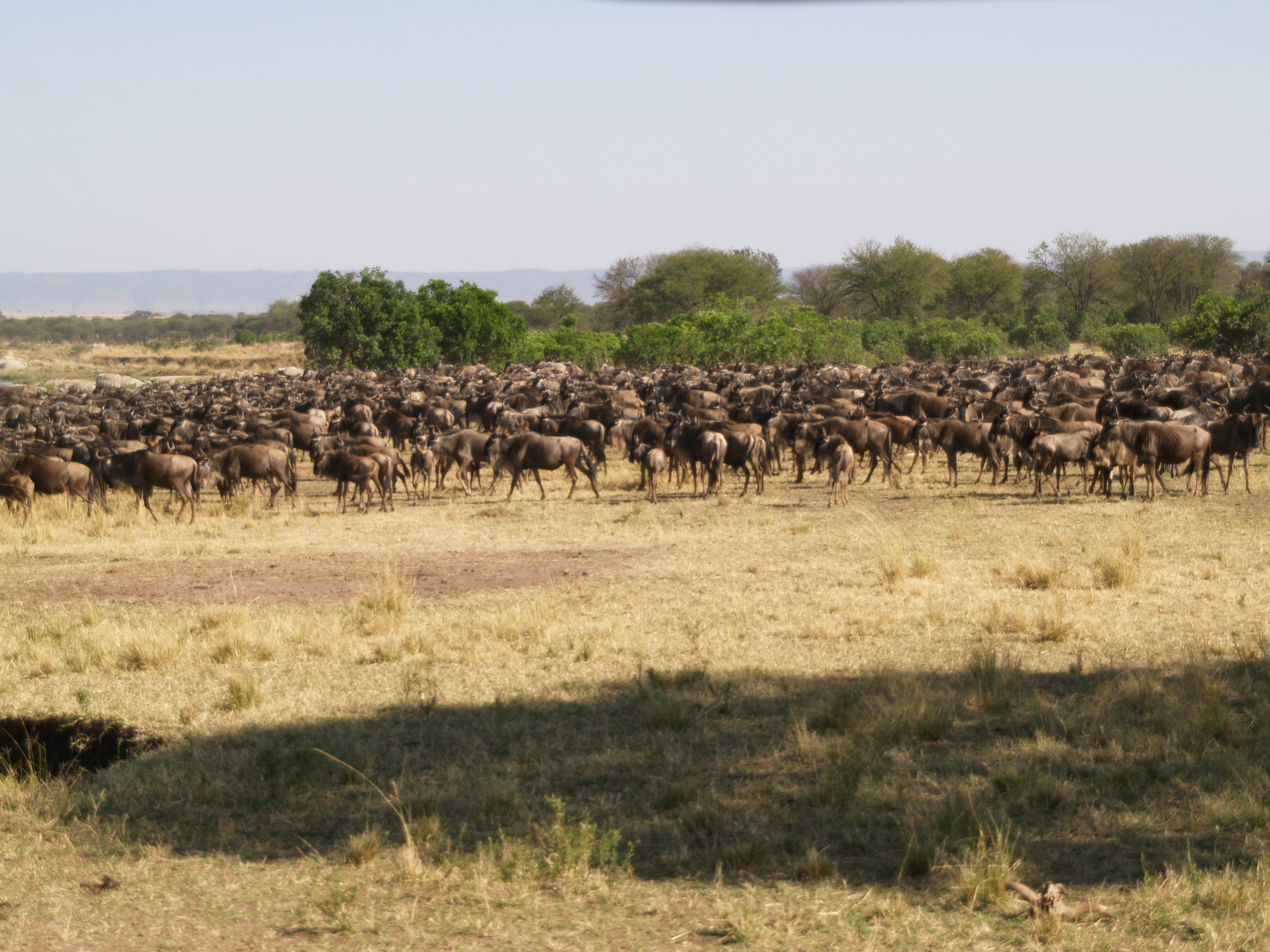
deciding whether to cross, the river is off to the left, we are parked just out of the way in some small trees
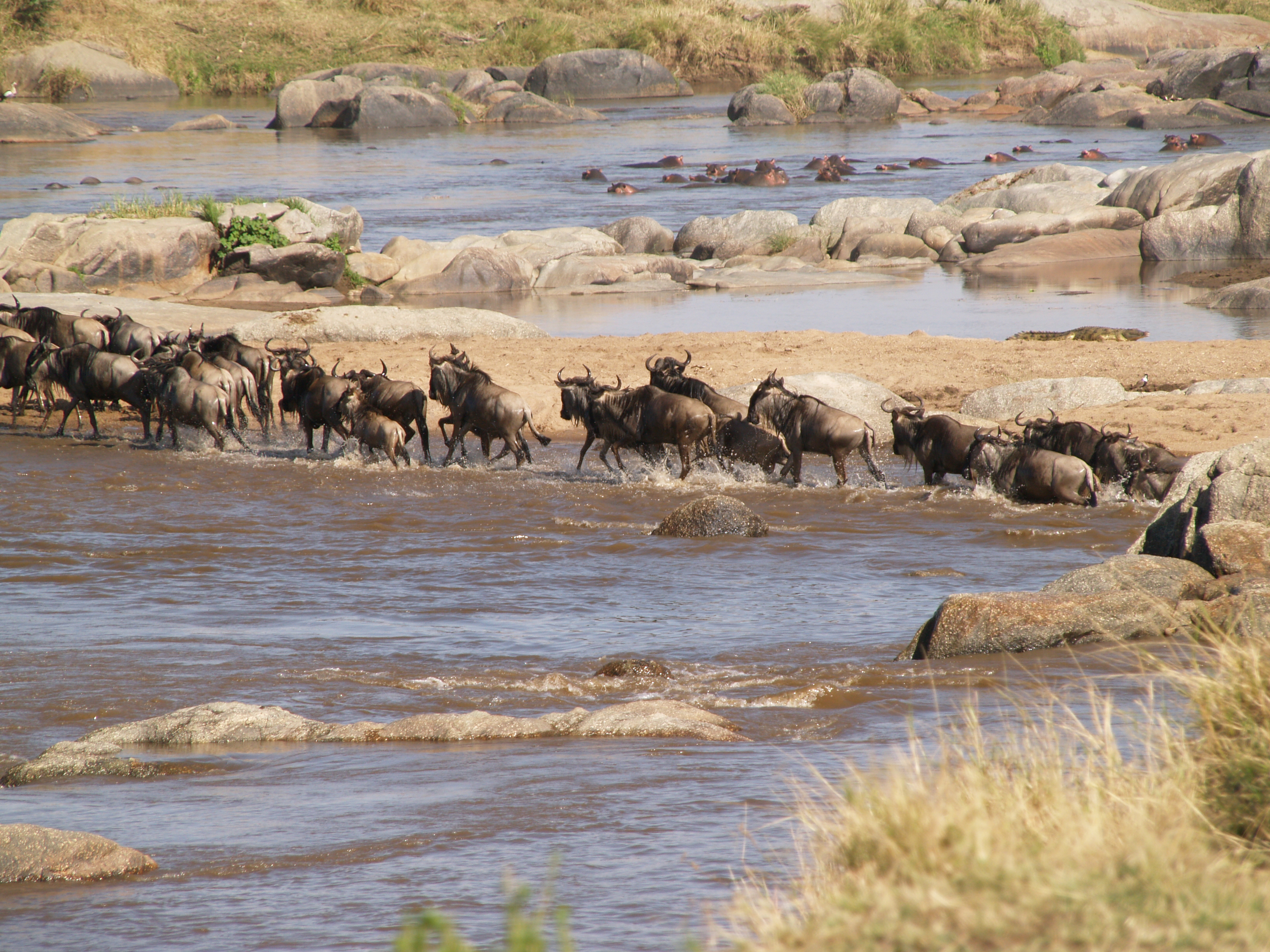
next three shots is a progression of wildebeest crossing the Mara River, hippos partially submerged in the background

